This list of birds of Georgia includes
species
In biology, a species is the basic unit of classification and a taxonomic rank of an organism, as well as a unit of biodiversity. A species is often defined as the largest group of organisms in which any two individuals of the appropriate s ...
documented in the
U.S. state
In the United States, a state is a constituent political entity, of which there are 50. Bound together in a political union, each state holds governmental jurisdiction over a separate and defined geographic territory where it shares its sove ...
of
Georgia
Georgia most commonly refers to:
* Georgia (country), a country in the Caucasus region of Eurasia
* Georgia (U.S. state), a state in the Southeast United States
Georgia may also refer to:
Places
Historical states and entities
* Related to the ...
and accepted by the Checklist and Records Committee of the Georgia Ornithological Society (GOSRC). As of August 2020, there are 427 species definitively included in the official list. Seven additional species are on the list but classed as provisional (see definitions below).
Of the 427 species, 100 are classed as rare, four have been
introduced to North America, and one is
extinct. (Another, the
ivory-billed woodpecker
The ivory-billed woodpecker (''Campephilus principalis'') is a possibly extinct woodpecker that is native to the bottomland hardwood forests and temperate coniferous forests of the Southern United States and Cuba. Habitat destruction and hunting ...
, is classed by the GOSRC as rare, but is arguably extinct. See its species account for the controversy surrounding this bird.) Additional accidental species have been added from different sources.
This list is presented in the
taxonomic sequence
Taxonomic sequence (also known as systematic, phyletic or taxonomic order) is a sequence followed in listing of taxa which aids ease of use and roughly reflects the evolutionary relationships among the taxa. Taxonomic sequences can exist for taxa ...
of the ''Check-list of North and Middle American Birds'', 7th edition through the 62nd Supplement, published by the
American Ornithological Society
The American Ornithological Society (AOS) is an ornithological organization based in the United States. The society was formed in October 2016 by the merger of the American Ornithologists' Union (AOU) and the Cooper Ornithological Society. Its m ...
(AOS).
Common and scientific names are also those of the ''Check-list'', except that the common names of families are from the
Clements taxonomy
''The Clements Checklist of Birds of the World'' is a book by Jim Clements which presents a list of the bird species of the world.
The most recent printed version is the sixth edition (2007), but has been updated yearly, the last version in 202 ...
because the AOS list does not include them.
Unless otherwise noted, all species listed below are considered to occur regularly in Georgia as permanent residents, summer or winter visitors, or migrants. The following tags are used to designate some species:
* (R) - Rare - a species whose report is reviewable by the GOSRC
* (I) - Introduced - a species introduced to North America by humans, either directly or indirectly
* (E) - Extinct - a recent species that no longer exists
* (P) - Provisional list - "species with fewer than 4 accepted sight records" per the GOSRC
Ducks, geese, and waterfowl
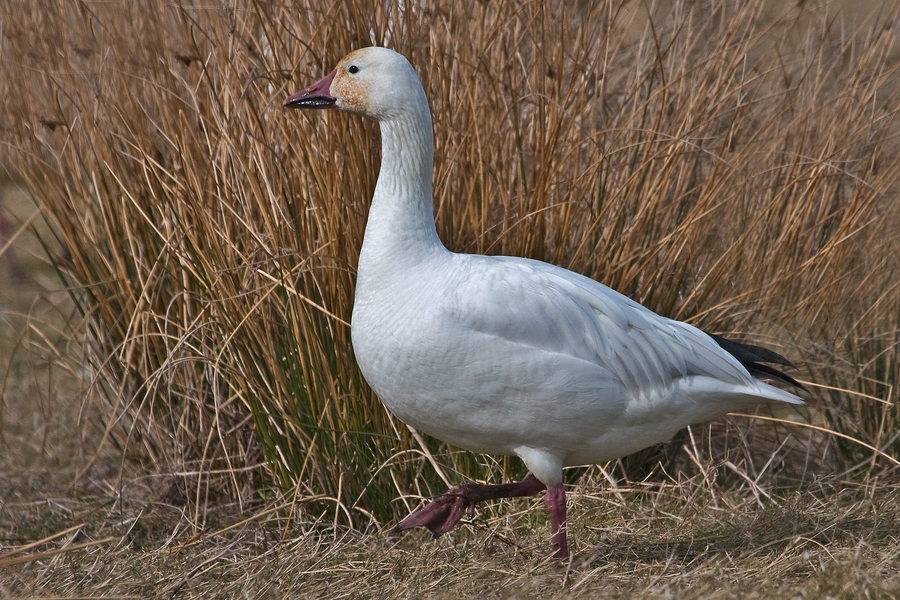
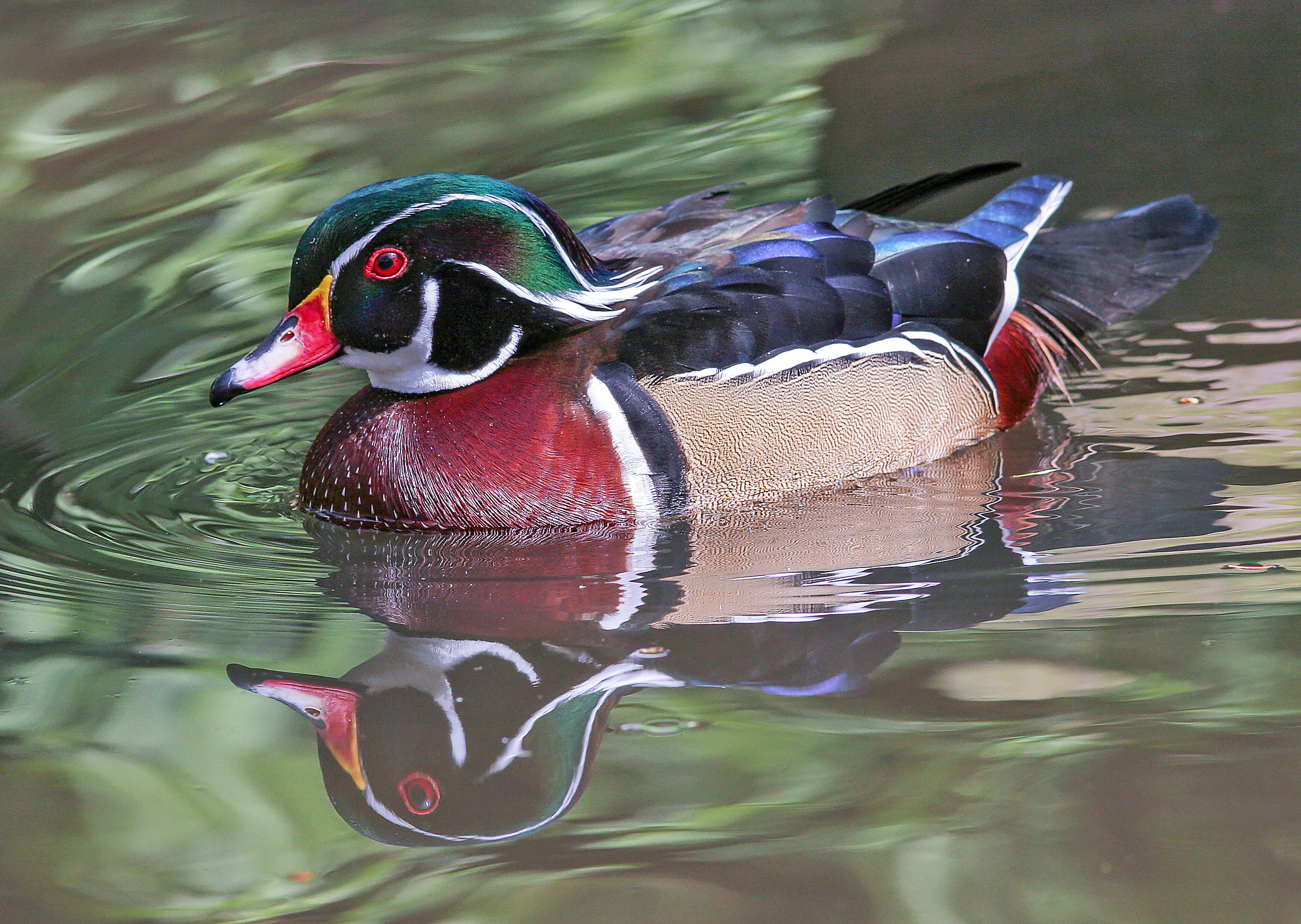

Order:
AnseriformesFamily:
Anatidae
The Anatidae are the biological family of water birds that includes ducks, geese, and swans. The family has a cosmopolitan distribution, occurring on all the world's continents except Antarctica. These birds are adapted for swimming, floating ...
The family Anatidae includes the ducks and most duck-like waterfowl, such as geese and swans. These are birds that are adapted for an aquatic existence with webbed feet, bills that are flattened to a greater or lesser extent, and feathers that are excellent at shedding water due to special oils. Forty-one species of Anatidae have been recorded in Georgia.
*
Black-bellied whistling-duck
The black-bellied whistling duck (''Dendrocygna autumnalis''), formerly called the black-bellied tree duck, is a whistling duck that breeds from the southernmost United States, Mexico, and tropical Central to south-central South America. In the ...
, ''Dendrocygna autumnalis''
*
Fulvous whistling-duck
The fulvous whistling duck or fulvous tree duck (''Dendrocygna bicolor'') is a species of whistling duck that breeds across the world's tropical regions in much of Mexico and South America, the West Indies, the southern United States, sub-Sahar ...
, ''Dendrocygna bicolor'' (R)
*
Snow goose
The snow goose (''Anser caerulescens'') is a species of goose native to North America. Both white and dark morphs exist, the latter often known as blue goose. Its name derives from the typically white plumage. The species was previously placed ...
, ''Anser caerulescens''
*
Ross's goose
The Ross's goose (''Anser rossii'') is a white goose with black wingtips and a relatively short neck. It is the smallest of the three " white geese" that breed in North America. It is similar in appearance to a white-phase snow goose, but about 4 ...
, ''Anser rossii''
*
Greater white-fronted goose
The greater white-fronted goose (''Anser albifrons'') is a species of goose related to the smaller lesser white-fronted goose (''A. erythropus''). It is named for the patch of white feathers bordering the base of its bill, in fact ''albifrons ...
, ''Anser albifrons''
*
Brant, ''Branta bernicla'' (R)
*
Barnacle goose
The barnacle goose (''Branta leucopsis'') is a species of goose that belongs to the genus '' Branta'' of black geese, which contains species with largely black plumage, distinguishing them from the grey ''Anser'' species. Despite its superficial ...
, ''Branta leucopsis'' (accidental)
*
Cackling goose, ''Branta hutchinsii'' (R)
*
Canada goose, ''Branta canadensis''
*
Trumpeter swan
The trumpeter swan (''Cygnus buccinator'') is a species of swan found in North America. The heaviest living bird native to North America, it is also the largest extant species of waterfowl, with a wingspan of 185 to 250 cm (6 ft 2 in to 8 ft 2 ...
, ''Cygnus buccinator'' (R)
*
Tundra swan
The tundra swan (''Cygnus columbianus'') is a small swan of the Holarctic. The two taxa within it are usually regarded as conspecific, but are also sometimes split into two species: Bewick's swan (''Cygnus bewickii'') of the Palaearctic and th ...
, ''Cygnus columbianus''
*
Whooper swan
The whooper swan ( /ˈhuːpə(ɹ) swɒn/) (''Cygnus cygnus''), also known as the common swan, pronounced ''hooper swan'', is a large northern hemisphere swan. It is the Eurasian counterpart of the North American trumpeter swan, and the type speci ...
, ''Cygnus cygnus'' (accidental)
*
Wood duck
The wood duck or Carolina duck (''Aix sponsa'') is a species of perching duck found in North America. The drake wood duck is one of the most colorful North American waterfowl.
Description
The wood duck is a medium-sized perching duck. A ty ...
, ''Aix sponsa''
*
Blue-winged teal
The blue-winged teal (''Spatula discors'') is a species of bird in the duck, goose, and swan family Anatidae. One of the smaller members of the dabbling duck group, it occurs in North America, where it breeds from southern Alaska to Nova Scoti ...
, ''Spatula discors''
*
Cinnamon teal
The cinnamon teal (''Spatula cyanoptera'') is a species of duck found in western North and South America. It is a small dabbling duck, with bright reddish plumage on the male and duller brown plumage on the female. It lives in marshes and ponds ...
, ''Spatula cyanoptera'' (R)
*
Northern shoveler
The northern shoveler (; ''Spatula clypeata''), known simply in Britain as the shoveler, is a common and widespread duck. It breeds in northern areas of Europe and across the Palearctic and across most of North America, wintering in southern E ...
, ''Spatula clypeata''
*
Gadwall, ''Mareca strepera''
*
Eurasian wigeon
The Eurasian wigeon or European wigeon (''Mareca penelope''), also known as the widgeon or the wigeon, is one of three species of wigeon in the dabbling duck genus ''Mareca''. It is common and widespread within its Palearctic range.
Taxonomy
Th ...
, ''Mareca penelope'' (R)
*
American wigeon
The American wigeon (''Mareca americana''), also known as the baldpate, is a species of dabbling duck found in North America. Formerly assigned to ''Anas'', this species is classified with the other wigeons in the dabbling duck genus '' Mareca'' ...
, ''Mareca americana''
*
Mallard, ''Anas platyrhynchos''
*
American black duck
The American black duck (''Anas rubripes'') is a large dabbling duck in the family Anatidae. It was described by William Brewster in 1902. It is the heaviest species in the genus ''Anas'', weighing on average and measuring in length with an ...
, ''Anas rubripes''
*
Mottled duck
The mottled duck (''Anas fulvigula'') or mottled mallard is a medium-sized species of dabbling duck. It is intermediate in appearance between the female mallard and the American black duck. It is closely related to those species, and is sometime ...
, ''Anas fulvigula''
*
Northern pintail
The pintail or northern pintail (''Anas acuta'') is a duck species with wide geographic distribution that breeds in the northern areas of Europe and across the Palearctic and North America. It is migratory and winters south of its breeding ...
, ''Anas acuta''
*
Green-winged teal
The green-winged teal (''Anas carolinensis'') is a common and widespread duck that breeds in the northern areas of North America except on the Aleutian Islands. It was considered conspecific with the Eurasian teal (''A. crecca'') for some time, ...
, ''Anas crecca carolinensis''
*
Canvasback
The canvasback (''Aythya valisineria'') is a species of diving duck, the largest found in North America.
Taxonomy
Scottish-American naturalist Alexander Wilson described the canvasback in 1814. The genus name is derived from Greek ''aithuia'', ...
, ''Aythya valisineria''
*
Redhead
Red hair (also known as orange hair and ginger hair) is a hair color found in one to two percent of the human population, appearing with greater frequency (two to six percent) among people of Northern or Northwestern European ancestry and ...
, ''Aythya americana''
*
Ring-necked duck
The ring-necked duck (''Aythya collaris'') is a diving duck from North America commonly found in freshwater ponds and lakes. The scientific name is derived from Greek , an unidentified seabird mentioned by authors including Hesychius and Arist ...
, ''Aythya collaris''
*
Greater scaup
The greater scaup (''Aythya marila''), just scaup in Europe or, colloquially, "bluebill" in North America, is a mid-sized diving duck, larger than the closely related lesser scaup. It spends the summer months breeding in Alaska, northern Canad ...
, ''Aythya marila''
*
Lesser scaup
The lesser scaup (''Aythya affinis'') is a small North American diving duck that migrates south as far as Central America in winter. It is colloquially known as the little bluebill or broadbill because of its distinctive blue bill. The origin of ...
, ''Aythya affinis''
*
King eider
The king eider (pronounced ) (''Somateria spectabilis'') is a large sea duck that breeds along Northern Hemisphere Arctic coasts of northeast Europe, North America and Asia. The birds spend most of the year in coastal marine ecosystems at high la ...
, ''Somateria spectabilis'' (R)
*
Common eider
The common eider (pronounced ) (''Somateria mollissima''), also called St. Cuthbert's duck or Cuddy's duck, is a large ( in body length) sea-duck that is distributed over the northern coasts of Europe, North America and eastern Siberia. It breed ...
, ''Somateria mollissima'' (R)
*
Harlequin duck
The harlequin duck (''Histrionicus histrionicus'') is a small sea duck. It takes its name from Harlequin (French ''Arlequin'', Italian ''Arlecchino''), a colourfully dressed character in Commedia dell'arte. The species name comes from the Latin ...
, ''Histrionicus histrionicus'' (R)
*
Surf scoter
The surf scoter (''Melanitta perspicillata'') is a large sea duck native to North America. Adult males are almost entirely black with characteristic white patches on the forehead and the nape and adult females are slightly smaller and browner. Su ...
, ''Melanitta perspicillata''
*
White-winged scoter
The white-winged scoter (''Melanitta deglandi'') is a large sea duck. The genus name is derived from Ancient Greek ''melas'' "black" and ''netta'' "duck". The species name commemorates French ornithologist Côme Damien Degland.
Description
The ...
, ''Melanitta deglandi''
*
Black scoter
The black scoter or American scoter (''Melanitta americana'') is a large sea duck, in length. The genus name is derived from Ancient Greek ''melas'' "black" and ''netta'' "duck". The species name is from the Latin for "American ".
Together wi ...
, ''Melanitta americana''
*
Long-tailed duck
The long-tailed duck (''Clangula hyemalis''), formerly known as oldsquaw, is a medium-sized sea duck that breeds in the tundra and taiga regions of the arctic and winters along the northern coastlines of the Atlantic and Pacific Oceans. It is th ...
, ''Clangula hyemalis''
*
Bufflehead, ''Bucephala albeola''
*
Common goldeneye
The common goldeneye or simply goldeneye (''Bucephala clangula'') is a medium-sized sea duck of the genus ''Bucephala'', the goldeneyes. Its closest relative is the similar Barrow's goldeneye. The genus name is derived from the Ancient Greek ...
, ''Bucephala clangula''
*
Hooded merganser
The hooded merganser (''Lophodytes cucullatus'') is a species of merganser. It is the only extant species in the genus ''Lophodytes''. The genus name derives from the Greek language: ''lophos'' meaning 'crest', and ''dutes'' meaning 'diver'. The ...
, ''Lophodytes cucullatus''
*
Common merganser
The common merganser (North American) or goosander (Eurasian) (''Mergus merganser'') is a large seaduck of rivers and lakes in forested areas of Europe, Asia, and North America. The common merganser eats mainly fish. It nests in holes in trees.
...
, ''Mergus merganser'' (R)
*
Red-breasted merganser
The red-breasted merganser (''Mergus serrator'') is a diving duck, one of the sawbills. The genus name is a Latin word used by Pliny and other Roman authors to refer to an unspecified waterbird, and ''serrator'' is a sawyer from Latin ''serra' ...
, ''Mergus serrator''
*
Masked duck
The masked duck (''Nomonyx dominicus'') is a tiny stiff-tailed duck ranging through the tropical Americas. They are found from Mexico to South America and also in the Caribbean. Primarily not migratory, masked ducks are reported as very uncommo ...
, ''Nomonyx dominicus'' (R)
*
Ruddy duck
The ruddy duck (''Oxyura jamaicensis'') is a duck from North America and one of the stiff-tailed ducks. The genus name is derived from Ancient Greek ''oxus'', "sharp", and ''oura'', "tail", and ''jamaicensis'' is "from Jamaica".
Taxonomy
The r ...
, ''Oxyura jamaicensis''
Guans, chachalacas, and curassows
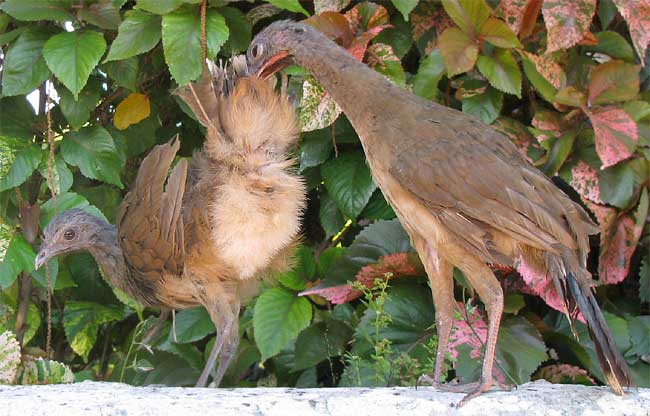
Order:
Galliformes
Galliformes is an order of heavy-bodied ground-feeding birds that includes turkeys, chickens, quail, and other landfowl. Gallinaceous birds, as they are called, are important in their ecosystems as seed dispersers and predators, and are ofte ...
Family:
Cracidae
The chachalacas, guans and curassows are birds in the family Cracidae. These are species of tropical and subtropical Central and South America. The range of one species, the plain chachalaca, just reaches southernmost parts of Texas in the Unite ...
The chachalacas are tropical fowl native to the Neotropics, only entering into southern Texas in their native range. They were introduced to
Sapelo,
Blackbeard
Edward Teach (alternatively spelled Edward Thatch, – 22 November 1718), better known as Blackbeard, was an English pirate who operated around the West Indies and the eastern coast of Britain's North American colonies. Little is known abou ...
and
Little St. Simons Islands in 1923.
*
Plain chachalaca, ''Ortalis vetula'' (I)
New World quail
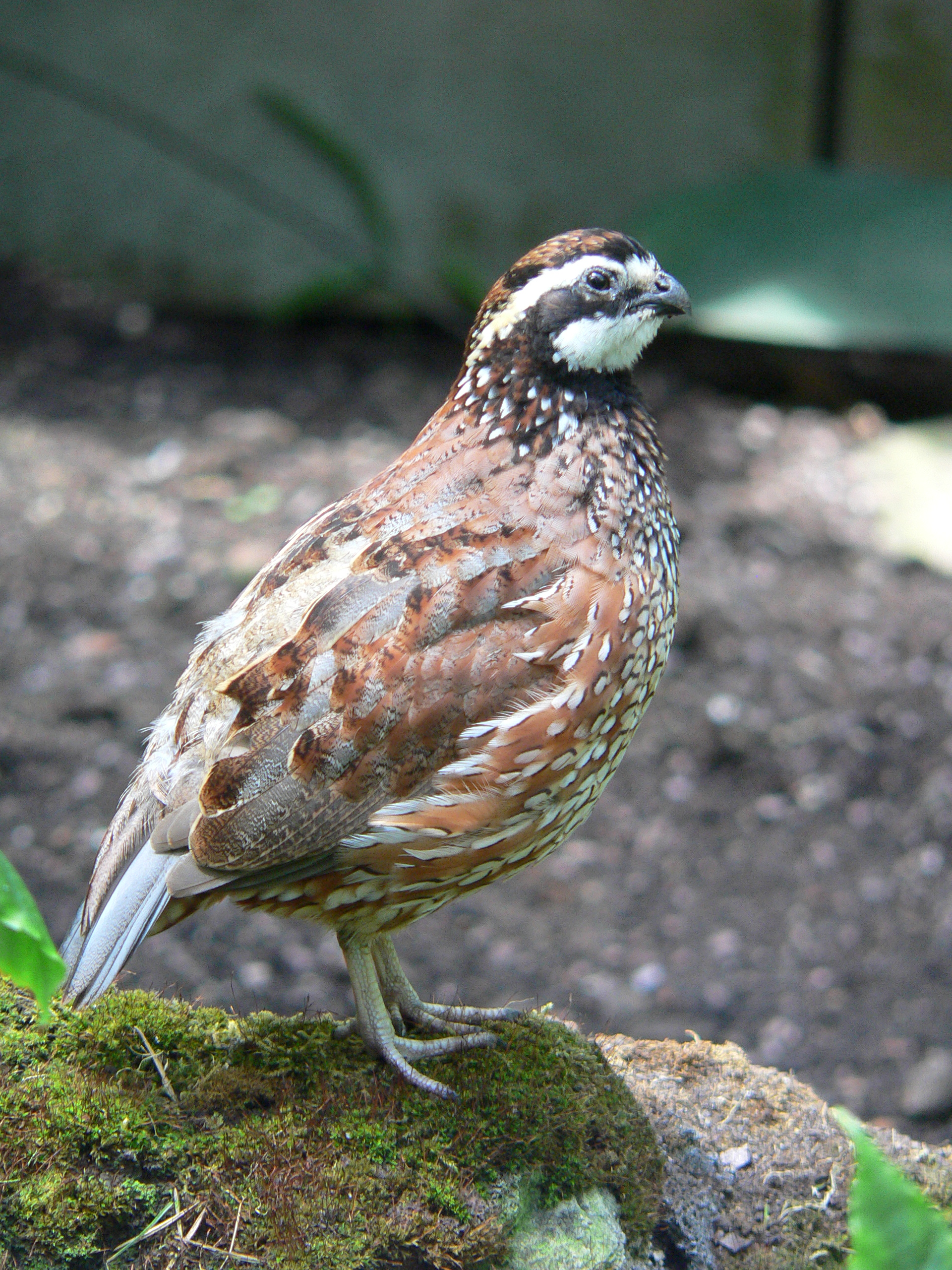
Order:
Galliformes
Galliformes is an order of heavy-bodied ground-feeding birds that includes turkeys, chickens, quail, and other landfowl. Gallinaceous birds, as they are called, are important in their ecosystems as seed dispersers and predators, and are ofte ...
Family:
Odontophoridae
The New World quail are small birds only distantly related to the Old World quail, but named for their similar appearance and habits. The American species are in their own family, the Odontophoridae, whereas Old World quail are in the pheasant ...
The New World quails are small, plump terrestrial birds only distantly related to the quails of the Old World, but named for their similar appearance and habits. Only one species of New World quail has been recorded in Georgia
*
Northern bobwhite
The northern bobwhite (''Colinus virginianus''), also known as the Virginia quail or (in its home range) bobwhite quail, is a ground-dwelling bird native to Canada, the United States, Mexico, and Cuba, with introduced populations elsewhere in th ...
, ''Colinus virginianus''
Pheasants, grouse, and allies
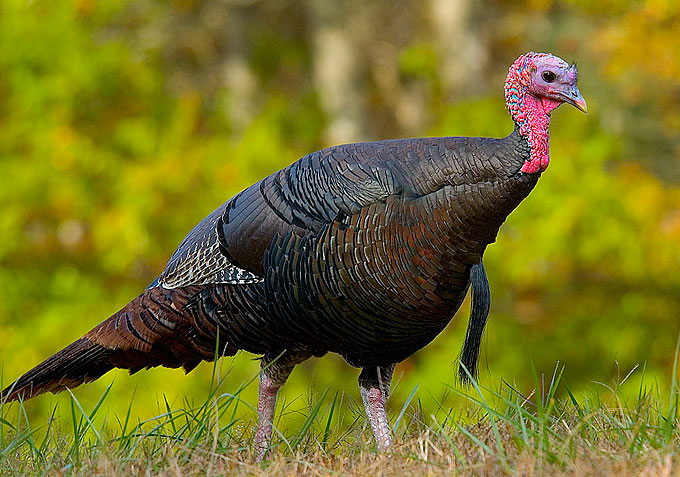
Order:
Galliformes
Galliformes is an order of heavy-bodied ground-feeding birds that includes turkeys, chickens, quail, and other landfowl. Gallinaceous birds, as they are called, are important in their ecosystems as seed dispersers and predators, and are ofte ...
Family:
Phasianidae
The Phasianidae is the family containing the pheasants and related species. These are terrestrial birds, variable in size but generally plump, with broad, relatively short wings. Many are gamebirds or have been domesticated as a food source for humans. Two species of Phasianidae have been recorded in Georgia.
*
Wild turkey
The wild turkey (''Meleagris gallopavo'') is an upland ground bird native to North America, one of two extant species of turkey and the heaviest member of the order Galliformes. It is the ancestor to the domestic turkey, which was originally d ...
, ''Meleagris gallopavo''
*
Ruffed grouse
The ruffed grouse (''Bonasa umbellus'') is a medium-sized grouse occurring in forests from the Appalachian Mountains across Canada to Alaska. It is the most widely distributed game bird in North America. It is non-migratory. It is the only specie ...
, ''Bonasa umbellus''
Grebes
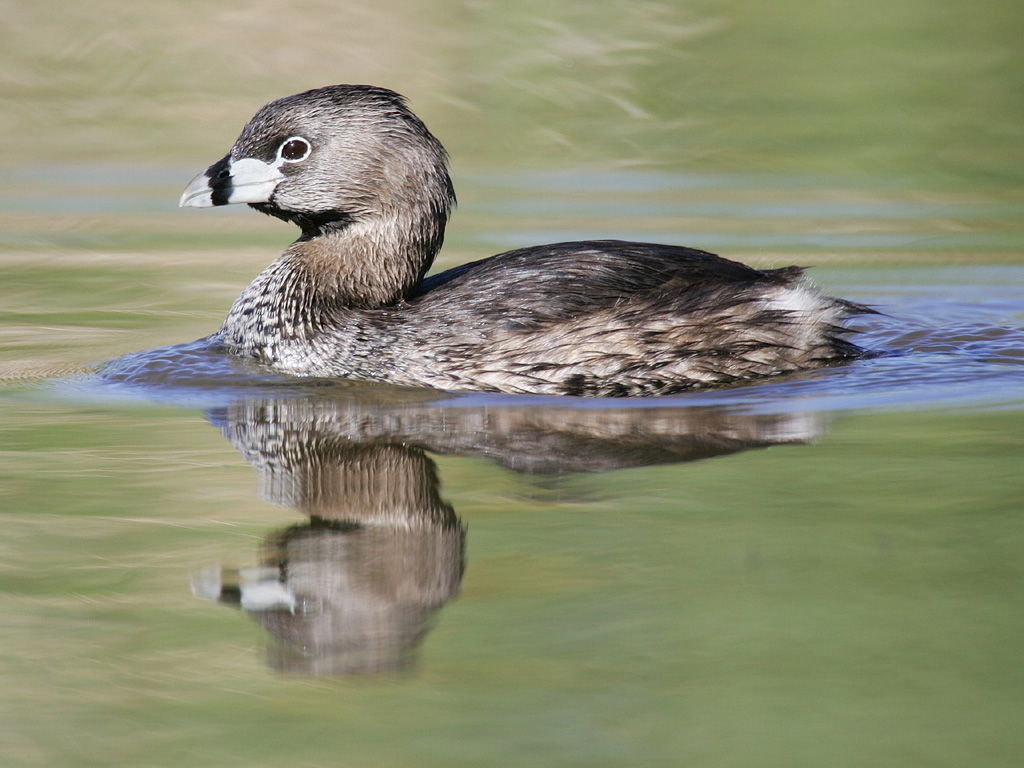
Order:
PodicipediformesFamily:
Podicipedidae
Grebes are small to medium-large freshwater diving birds. They have lobed toes and are excellent swimmers and divers. However, they have their feet placed far back on the body, making them quite ungainly on land. Five species of grebe have been recorded in Georgia.
*
Pied-billed grebe
The pied-billed grebe (''Podilymbus podiceps'') is a species of the grebe family of water birds. Because the Atitlán grebe (''Podilymbus gigas'') has become extinct, the Pied-Billed Grebe is now the sole extant member of the genus ''Podilymbus'' ...
, ''Podilymbus podiceps''
*
Horned grebe
The horned grebe or Slavonian grebe (''Podiceps auritus'') is a relatively small waterbird in the family Podicipedidae. There are two known subspecies: ''P. a. auritus'', which breeds in the Palearctic, and ''P. a. cornutus'', which breeds in ...
, ''Podiceps auritus''
*
Red-necked grebe
The red-necked grebe (''Podiceps grisegena'') is a migratory aquatic bird found in the temperate regions of the northern hemisphere. Its wintering habitat is largely restricted to calm waters just beyond the waves around ocean coasts, although ...
, ''Podiceps grisegena''
*
Eared grebe, ''Podiceps nigricollis''
*
Western grebe
The western grebe (''Aechmophorus occidentalis'') is a species in the grebe family of water birds. Folk names include "dabchick", "swan grebe" and "swan-necked grebe".
Western grebe fossils from the Late Pleistocene of southwest North America ...
, ''Aechmorphorus occidentalis'' (R)
Pigeons and doves

Order:
Columbiformes
Columbidae () is a bird family consisting of doves and pigeons. It is the only family in the order Columbiformes. These are stout-bodied birds with short necks and short slender bills that in some species feature fleshy ceres. They primarily ...
Family:
Columbidae
Columbidae () is a bird family consisting of doves and pigeons. It is the only family in the order Columbiformes. These are stout-bodied birds with short necks and short slender bills that in some species feature fleshy ceres. They primarily ...
Pigeons and doves are stout-bodied birds with short necks and short slender bills with a fleshy
cere
The beak, bill, or rostrum is an external anatomical structure found mostly in birds, but also in turtles, non-avian dinosaurs and a few mammals. A beak is used for eating, preening, manipulating objects, killing prey, fighting, probing for food ...
. Seven species of columbidae have been recorded in Georgia.
*
Rock pigeon
The rock dove, rock pigeon, or common pigeon ( also ; ''Columba livia'') is a member of the bird family Columbidae (doves and pigeons). In common usage, it is often simply referred to as the "pigeon".
The domestic pigeon (''Columba livia domes ...
, ''Columba livia'' (I)
*
Eurasian collared-dove
The Eurasian collared dove (''Streptopelia decaocto'') is a dove species native to Europe and Asia; it was introduced to Japan, North America and islands in the Caribbean. Because of its vast global range and increasing population trend, it ha ...
, ''Streptopelia decaocto'' (I)
*
Inca dove
The Inca dove or Mexican dove (''Columbina inca'') is a small New World dove. The species was first described by French surgeon and naturalist René Lesson in 1847. It reaches a length of and weighs . The Inca dove has an average wingspan of 2 ...
, ''Columbina inca'' (R)
*
Passenger pigeon
The passenger pigeon or wild pigeon (''Ectopistes migratorius'') is an extinct species of pigeon that was endemic to North America. Its common name is derived from the French word ''passager'', meaning "passing by", due to the migratory habits ...
, ''Ectopistes migratorius'' (E)
*
Common ground dove
The common ground dove (''Columbina passerina'') is a small bird that inhabits the southern United States, parts of Central America, the Caribbean and northern South America. It is considered to be the smallest dove that inhabits the United State ...
, ''Columbina passerina''
*
White-winged dove
The white-winged dove (''Zenaida asiatica'') is a dove whose native range extends from the Southwestern United States through Mexico, Central America, and the Caribbean. They are large for doves, and can be distinguished from similar doves by th ...
, ''Zenaida asiatica''
*
Mourning dove
The mourning dove (''Zenaida macroura'') is a member of the dove family, Columbidae. The bird is also known as the American mourning dove, the rain dove, and colloquially as the turtle dove, and was once known as the Carolina pigeon and Caroli ...
, ''Zenaida macroura''
Cuckoos
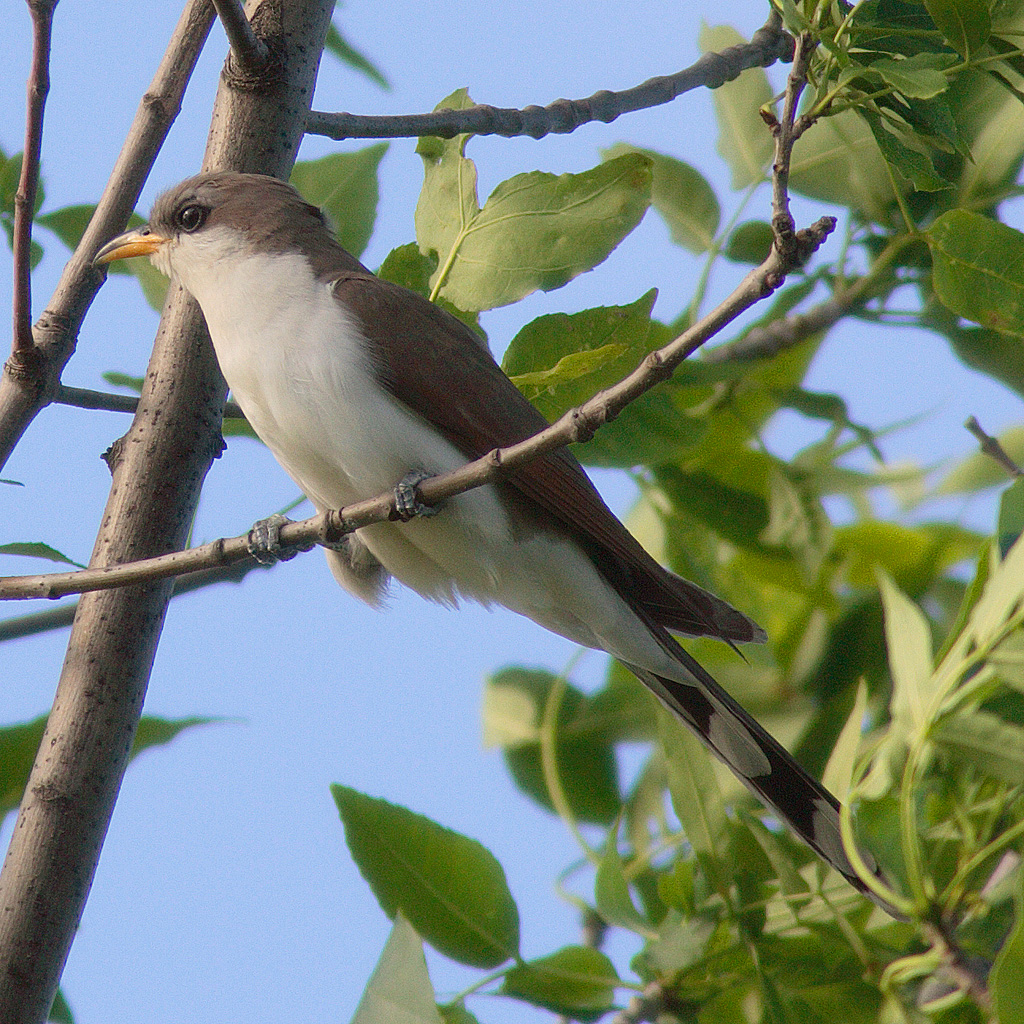
Order:
Cuculiformes
Cuckoos are birds in the Cuculidae family, the sole taxon in the order Cuculiformes . The cuckoo family includes the common or European cuckoo, roadrunners, koels, malkohas, couas, coucals and anis. The coucals and anis are sometimes separa ...
Family:
Cuculidae
Cuckoos are birds in the Cuculidae family, the sole taxon in the order Cuculiformes . The cuckoo family includes the common or European cuckoo, roadrunners, koels, malkohas, couas, coucals and anis. The coucals and anis are sometimes separa ...
The family Cuculidae includes cuckoos, roadrunners, and anis. These birds are of variable size with slender bodies, long tails, and strong legs. Three species of cuckoo have been recorded in Georgia.
*
Smooth-billed ani
The smooth-billed ani (''Crotophaga ani'') is a bird in the cuckoo family. It is a resident breeding species from southern Florida, the Caribbean, parts of Central America, south to western Ecuador, Brazil, northern Argentina and southern Chile. ...
, ''Crotophaga ani'' (R)
*
Yellow-billed cuckoo
The yellow-billed cuckoo (''Coccyzus americanus'') is a cuckoo. Common folk-names for this bird in the southern United States are rain crow and storm crow. These likely refer to the bird's habit of calling on hot days, often presaging rain or th ...
, ''Coccyzus americanus''
*
Black-billed cuckoo, ''Coccyzus erythropthalmus''
Nightjars and allies

Order:
Caprimulgiformes
Nightjars are medium-sized nocturnal or crepuscular birds in the family Caprimulgidae and order Caprimulgiformes, characterised by long wings, short legs, and very short bills. They are sometimes called goatsuckers, due to the ancient folk tal ...
Family:
Caprimulgidae
Nightjars are medium-sized nocturnal birds that usually nest on the ground. They have long wings, short legs, and very short bills. Most have small feet, of little use for walking, and long pointed wings. Their soft plumage is cryptically colored to resemble bark or leaves. Four species of nightjar have been recorded in Georgia.
*
Lesser nighthawk
The lesser nighthawk (''Chordeiles acutipennis'') is a nightjar found throughout a large part of the Americas.
The adults are dark with brown, grey and white patterning on the upperparts and breast; the long upperwings are black and show a whit ...
, ''Chordeiles acutipennis'' (accidental)
*
Common nighthawk
The common nighthawk (''Chordeiles minor'') is a medium-sized crepuscular or nocturnal bird of the Americas within the nightjar family, whose presence and identity are best revealed by its vocalization. Typically dark (gray, black and brown), di ...
, ''Chordeiles minor''
*
Chuck-will's-widow
The chuck-will's-widow (''Antrostomus carolinensis'') is a nocturnal bird of the nightjar family Caprimulgidae. It is mostly found in the southeastern United States (with disjunct populations in Long Island, New York, Ontario, Canada and Cape C ...
, ''Antrostomus carolinensis''
*
Eastern whip-poor-will
The eastern whip-poor-will (''Antrostomus vociferus'') is a medium-sized (22–27 cm; 8.7-10.6 ins.) bird within the nightjar family, Caprimulgidae, from North America. The whip-poor-will is commonly heard within its range, but less o ...
, ''Antrostomus vociferus''
Swifts
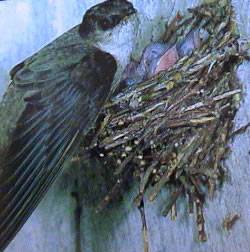
Order:
Apodiformes
Traditionally, the bird order Apodiformes contained three living families: the swifts (Apodidae), the treeswifts (Hemiprocnidae), and the hummingbirds (Trochilidae). In the Sibley-Ahlquist taxonomy, this order is raised to a superorder Apodi ...
Family:
Apodidae
The swifts are a family, Apodidae, of highly aerial birds. They are superficially similar to swallows, but are not closely related to any passerine species. Swifts are placed in the order Apodiformes with hummingbirds. The treeswifts are closely ...
The swifts are small birds, spending most of their lives flying. They have very short legs and never settle voluntarily on the ground, perching instead only on vertical surfaces. Many swifts have very long swept-back wings which resemble a crescent or boomerang. One species of swift has been recorded in Georgia.
*
Chimney swift
The chimney swift (''Chaetura pelagica'') is a bird belonging to the swift family Apodidae. A member of the genus ''Chaetura'', it is closely related to both the Vaux's swift and the Chapman's swift; in the past, the three were sometimes consider ...
, ''Chaetura pelagica''
Hummingbirds

Order:
Apodiformes
Traditionally, the bird order Apodiformes contained three living families: the swifts (Apodidae), the treeswifts (Hemiprocnidae), and the hummingbirds (Trochilidae). In the Sibley-Ahlquist taxonomy, this order is raised to a superorder Apodi ...
Family:
Trochilidae
Hummingbirds are birds native to the Americas and comprise the biological family Trochilidae. With about 361 species and 113 genera, they occur from Alaska to Tierra del Fuego, but the vast majority of the species are found in the tropics aro ...
Hummingbirds are small birds capable of hovering in mid-air due to the rapid flapping of their wings. They are the only birds that can fly backwards. Thirteen species of hummingbird have been recorded in Georgia.
*
Mexican violetear, ''Colibri thalassinus'' (P)
*
Green-breasted mango, ''Anthracothorax prevostii'' (R)
*
Rivoli's hummingbird, ''Eugenes fulgens'' (R)
*
Blue-throated mountain-gem
The blue-throated mountaingem, also known as the blue-throated mountain-gem or blue-throated hummingbird (''Lampornis clemenciae'') is a species of hummingbird in tribe Lampornithini of subfamily Trochilinae. It is found in the United States and ...
, ''Lampornis clemenciae'' (R)
*
Ruby-throated hummingbird
The ruby-throated hummingbird (''Archilochus colubris'') is a species of hummingbird that generally spends the winter in Central America, Mexico, and Florida, and migrates to Canada and other parts of Eastern North America for the summer to bree ...
, ''Archilochus colubris''
*
Black-chinned hummingbird
The black-chinned hummingbird (''Archilochus alexandri'') is a small hummingbird occupying a broad range of habitats. It is migratory, spending winter as far south as Mexico.
Taxonomy
A hybrid between this species and Anna's hummingbird was ca ...
, ''Archilochus alexandri''
*
Anna's hummingbird, ''Calypte anna'' (R)
*
Calliope hummingbird
The calliope hummingbird ( ; ''Selasphorus calliope'') is the smallest bird native to the United States and Canada. It has a western breeding range mainly from California to British Columbia, and migrates to the Southwestern United States, Mexic ...
, ''Selasphorus calliope'' (R)
*
Rufous hummingbird, ''Selasphorus rufus''
*
Allen's hummingbird
Allen's hummingbird (''Selasphorus sasin'') is a species of hummingbird that breeds in the western United States. It is one of seven species in the genus ''Selasphorus''.
Description
Allen's hummingbird is a small bird, with mature adults reac ...
, ''Selasphorus sasin'' (R)
*
Broad-tailed hummingbird
The broad-tailed hummingbird (''Selasphorus platycercus'') is a medium-sized hummingbird species found in highland regions from western United States and Western Canada to Mexico and Guatemala.
Description
Medium in size, the broad-tail ...
, ''Selasphorus platycercus'' (R)
*
Broad-billed hummingbird, ''Cynanthus latirostris'' (R)
*
Buff-bellied hummingbird, ''Amazila yucatanensis'' (R)
Rails, gallinules, and coots
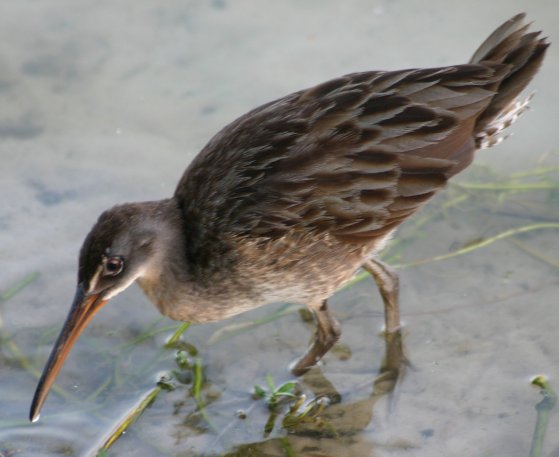
Order:
Gruiformes
The Gruiformes are an order containing a considerable number of living and extinct bird families, with a widespread geographical diversity. Gruiform means "crane-like".
Traditionally, a number of wading and terrestrial bird families that did ...
Family:
Rallidae
The rails, or Rallidae, are a large cosmopolitan family of small- to medium-sized, ground-living birds. The family exhibits considerable diversity and includes the crakes, coots, and gallinules. Many species are associated with wetlands, althou ...
The Rallidae is a large family of small to medium-sized birds which includes the rails, crakes, coots, and gallinules. The most typical family members occupy dense vegetation in damp environments near lakes, swamps, or rivers. In general they are shy and secretive, making them difficult to observe. Nine species of rails have been recorded in Georgia.
*
Clapper rail
The clapper rail (''Rallus crepitans'') is a member of the rail family, Rallidae. The taxonomy for this species is confusing and still being determined. It is a large brown rail that is resident in wetlands along the Atlantic coasts of the easte ...
, ''Rallus crepitans''
*
King rail, ''Rallus elegans''
*
Virginia rail
The Virginia rail (''Rallus limicola'') is a small waterbird, of the family Rallidae.
These birds remain fairly common despite continuing loss of habitat, but are secretive by nature and more often heard than seen. They are also considered a ga ...
, ''Rallus limicola''
*
Sora, ''Porzana carolina''
*
Common gallinule
The common gallinule (''Gallinula galeata'') is a bird in the family Rallidae. It was split from the common moorhen by the American Ornithologists' Union in July 2011. It lives around well-vegetated marshes, ponds, canals, and other wetlands in t ...
, ''Gallinula galeata''
*
American coot
The American coot (''Fulica americana''), also known as a mud hen or pouldeau, is a bird of the family Rallidae. Though commonly mistaken for ducks, American coots are only distantly related to ducks, belonging to a separate order. Unlike the w ...
, ''Fulica americana''
*
Purple gallinule, ''Porphyrio martinicus''
*
Yellow rail
The yellow rail (''Coturnicops noveboracensis'') is a small secretive marsh bird, of the family Rallidae that is found in North America.
Taxonomy
The yellow rail was formally described in 1789 by the German naturalist Johann Friedrich Gmelin in ...
, ''Coturnicops noveboracensis'' (R)
*
Black rail, ''Laterallus jamaicensis'' (R)
Limpkin

Order:
Gruiformes
The Gruiformes are an order containing a considerable number of living and extinct bird families, with a widespread geographical diversity. Gruiform means "crane-like".
Traditionally, a number of wading and terrestrial bird families that did ...
Family:
Aramidae
Aramidae is a bird family in the order Gruiformes. The limpkin (''Aramus guarauna'') is the only living member of this family, although other species are known from the fossil record, such as '' Aramus paludigrus'' from the Middle Miocene and '' ...
The limpkin is an odd bird that looks like a large
rail
Rail or rails may refer to:
Rail transport
*Rail transport and related matters
*Rail (rail transport) or railway lines, the running surface of a railway
Arts and media Film
* ''Rails'' (film), a 1929 Italian film by Mario Camerini
* ''Rail'' ( ...
, but is skeletally closer to the
cranes. It is found in marshes with some trees or scrub in the
Caribbean,
South America
South America is a continent entirely in the Western Hemisphere and mostly in the Southern Hemisphere, with a relatively small portion in the Northern Hemisphere at the northern tip of the continent. It can also be described as the sout ...
and southern
Florida
Florida is a state located in the Southeastern region of the United States. Florida is bordered to the west by the Gulf of Mexico, to the northwest by Alabama, to the north by Georgia, to the east by the Bahamas and Atlantic Ocean, and to ...
. The family is monotypic, and its sole member has been recorded in Georgia.
*
Limpkin
The limpkin (''Aramus guarauna''), also called carrao, courlan, and crying bird, is a large wading bird related to rails and cranes, and the only extant species in the family Aramidae. It is found mostly in wetlands in warm parts of the America ...
, ''Aramus guarauna''
Cranes

Order:
Gruiformes
The Gruiformes are an order containing a considerable number of living and extinct bird families, with a widespread geographical diversity. Gruiform means "crane-like".
Traditionally, a number of wading and terrestrial bird families that did ...
Family:
Gruidae
Cranes are large, long-legged, and long-necked birds. Unlike the similar-looking but unrelated herons, cranes fly with necks extended. Most have elaborate and noisy courtship displays or "dances". Two species of crane have been recorded in Georgia.
*
Sandhill crane
The sandhill crane (''Antigone canadensis'') is a species of large crane of North America and extreme northeastern Siberia. The common name of this bird refers to habitat like that at the Platte River, on the edge of Nebraska's Sandhills on ...
, ''Antigone canadensis''
*
Whooping crane
The whooping crane (''Grus americana'') is the tallest North American bird, named for its whooping sound. It is an endangered crane species. Along with the sandhill crane (''Antigone canadensis''), it is one of only two crane species native to ...
, ''Grus americana'' (R)
Stilts and avocets

Order:
Charadriiformes
Charadriiformes (, from ''Charadrius'', the type genus of family Charadriidae) is a diverse order of small to medium-large birds. It includes about 390 species and has members in all parts of the world. Most charadriiform birds live near water an ...
Family:
Recurvirostridae
The Recurvirostridae are a family of birds in the wader suborder Charadrii. It contains two distinct groups of birds, the avocets (one genus) and the stilts (two genera).
Description
Avocets and stilts range in length from and in weight fro ...
Recurvirostridae is a family of large wading birds which includes the avocets and stilts. The avocets have long legs and long up-curved bills. The stilts have extremely long legs and long, thin, straight bills. Two species of this family have been recorded in Georgia.
*
Black-necked stilt, ''Himantopus mexicanus''
*
American avocet
The American avocet (''Recurvirostra americana'') is a large wader in the avocet and stilt family, Recurvirostridae, that is found in North America. It spends much of its time foraging in shallow water or on mud flats, often sweeping its bill ...
, ''Recurvirostra americana''
Oystercatchers
Order:
Charadriiformes
Charadriiformes (, from ''Charadrius'', the type genus of family Charadriidae) is a diverse order of small to medium-large birds. It includes about 390 species and has members in all parts of the world. Most charadriiform birds live near water an ...
Family:
Haematopodidae
The oystercatchers are large, conspicuous, and noisy
plover
Plovers ( , ) are a widely distributed group of wading birds belonging to the subfamily Charadriinae.
Description
There are about 66 species in the subfamily, most of them called "plover" or "dotterel". The closely related lapwing subf ...
-like birds, with strong bills used for smashing or prising open
molluscs. A single species of oystercatcher has been recorded in Georgia.
*
American oystercatcher
The American oystercatcher (''Haematopus palliatus''), occasionally called the American pied oystercatcher, is a member of family Haematopodidae. Originally called the "sea pie", it was renamed in 1731 when naturalist Mark Catesby observed the ...
, ''Haematopus palliatus''
Lapwings and plovers

Order:
Charadriiformes
Charadriiformes (, from ''Charadrius'', the type genus of family Charadriidae) is a diverse order of small to medium-large birds. It includes about 390 species and has members in all parts of the world. Most charadriiform birds live near water an ...
Family:
Charadriidae
The bird family Charadriidae includes the plovers, dotterels, and lapwings, about 64 to 68 species in all.
Taxonomy
The family Charadriidae was introduced (as Charadriadæ) by the English zoologist William Elford Leach in a guide to the con ...
The family Charadriidae includes the plovers, dotterels, and lapwings. They are small to medium-sized birds with compact bodies, short thick necks, and long, usually pointed, wings. They are generally found in open country, mostly in habitats near water. Eight species of Charadriidae have been definitively recorded in Georgia and another has been classed as provisional.
*
Northern lapwing, ''Vanellus vanellus'' (R)
*
Black-bellied plover
The grey plover or black-bellied plover (''Pluvialis squatarola'') is a large plover breeding in Arctic regions. It is a long-distance migrant, with a nearly worldwide coastal distribution when not breeding.
Taxonomy
The grey plover was forma ...
, ''Pluvialis squatarola''
*
American golden-plover, ''Pluviali dominicas ''
*
Killdeer
The killdeer (''Charadrius vociferus'') is a large plover found in the Americas. It was described and given its current scientific name in 1758 by Carl Linnaeus in the 10th edition of his ''Systema Naturae''. Three subspecies are described. Th ...
, ''Charadrius vociferus''
*
Semipalmated plover
The semipalmated plover (''Charadrius semipalmatus'') is a small plover. ''Charadrius'' is a Late Latin word for a yellowish bird mentioned in the fourth-century Vulgate. It derives from Ancient Greek ''kharadrios'' a bird found in ravines and ri ...
, ''Charadrius semipalmatus''
*
Piping plover, ''Charadrius melodus''
*
Wilson's plover
Wilson's plover (''Charadrius wilsonia'') is a small bird of the family Charadriidae.
It was named after the Scottish-American ornithologist Alexander Wilson by his friend George Ord in 1814.
Wilson's plover is a coastal wader which breeds o ...
, ''Charadrius wilsonia''
*
Snowy plover
The snowy plover (''Charadrius nivosus'') is a small wader in the plover bird family, typically about 5-7" in length. It breeds in the southern and western United States, the Caribbean, Ecuador, Peru, and Chile. Long considered to be a subspecie ...
, ''Charadrius nivosus'' (R)
*
Mountain plover
The mountain plover (''Charadrius montanus'') is a medium-sized ground bird in the plover family (Charadriidae). It is misnamed, as it lives on level land. Unlike most plovers, it is usually not found near bodies of water or even on wet soil; i ...
, ''Charadrius montanus'' (P)
Sandpipers and allies
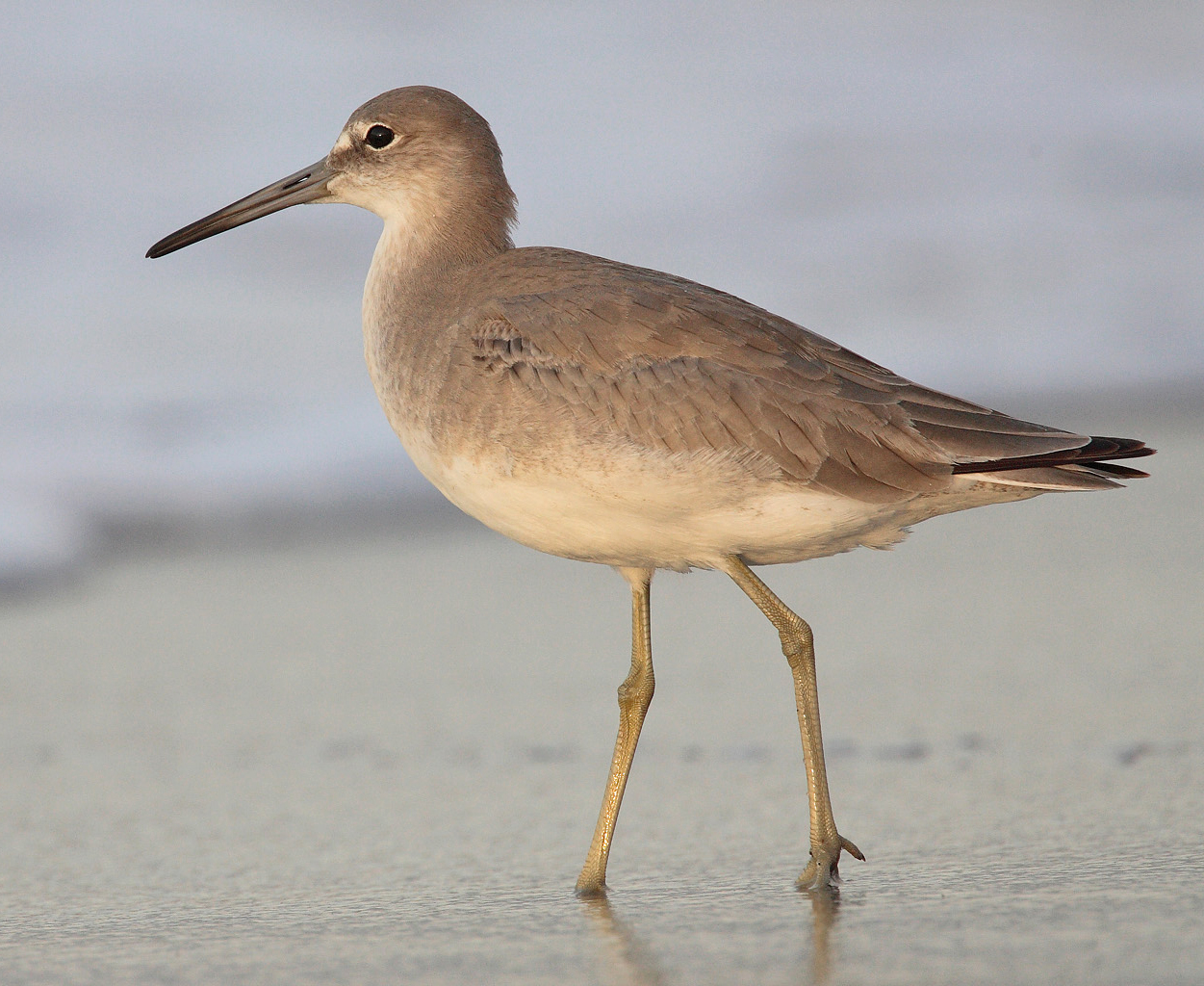

Order:
Charadriiformes
Charadriiformes (, from ''Charadrius'', the type genus of family Charadriidae) is a diverse order of small to medium-large birds. It includes about 390 species and has members in all parts of the world. Most charadriiform birds live near water an ...
Family:
Scolopacidae
Sandpipers are a large family, Scolopacidae, of waders. They include many species called sandpipers, as well as those called by names such as curlew and snipe. The majority of these species eat small invertebrates picked out of the mud or soil. ...
Scolopacidae is a large and diverse family of small to medium-sized shorebirds. Most eat small invertebrates picked out of the mud or sand. Different lengths of legs and bills enable multiple species to feed in the same habitat, particularly on the coast, without direct competition for food. thirty-three species of scolopacidae have been recorded in Georgia.
*
Upland sandpiper
The upland sandpiper (''Bartramia longicauda'') is a large sandpiper, closely related to the curlews. Older names are the upland plover and Bartram's sandpiper. In Louisiana, it is also colloquially known as the papabotte. It is the only member ...
, ''Bartramia longicauda''
*
Whimbrel, ''Numenius phaeopus''
*
Long-billed curlew
The long-billed curlew (''Numenius americanus'') is a large North American shorebird of the family Scolopacidae. This species was also called "sicklebird" and the "candlestick bird". The species breeds in central and western North America, migr ...
, ''Numenius americanus''
*
Bar-tailed godwit
The bar-tailed godwit (''Limosa lapponica'') is a large and strongly migratory wader in the family Scolopacidae, which feeds on bristle-worms and shellfish on coastal mudflats and estuaries. It has distinctive red breeding plumage, long legs, ...
, ''Limosa lapponica'' (accidental)
*
Hudsonian godwit, ''Limosa haemastica'' (R)
*
Marbled godwit
The marbled godwit (''Limosa fedoa'') is a large migratory shorebird in the family Scolopacidae. On average, it is the largest of the four species of godwit.
Taxonomy
In 1750 the English naturalist George Edwards included an illustration and a ...
, ''Limosa fedoa''
*
Ruddy turnstone
The ruddy turnstone (''Arenaria interpres'') is a small cosmopolitan wading bird, one of two species of turnstone in the genus ''Arenaria''.
It is now classified in the sandpiper family Scolopacidae but was formerly sometimes placed in the plov ...
, ''Arenaria interpres''
*
Red knot
The red knot or just knot (''Calidris canutus'') is a medium-sized shorebird which breeds in tundra and the Arctic Cordillera in the far north of Canada, Europe, and Russia. It is a large member of the '' Calidris'' sandpipers, second only to the ...
, ''Calidris canutus''
*
Ruff
Ruff may refer to:
Places
*Ruff, Virginia, United States, an unincorporated community
*Ruff, Washington, United States, an unincorporated community
Other uses
*Ruff (bird) (''Calidris pugnax'' or ''Philomachus pugnax''), a bird in the wader fami ...
, ''Calidris pugnax'' (R)
*
Stilt sandpiper
The stilt sandpiper (''Calidris himantopus'') is a small shorebird. The scientific name is from Ancient Greek. The genus name ''kalidris'' or ''skalidris'' is a term used by Aristotle for some grey-coloured waterside birds. The specific ''himanto ...
, ''Calidris himantopus''
*
Curlew sandpiper
The curlew sandpiper (''Calidris ferruginea'') is a small wader that breeds on the tundra of Arctic Siberia.
It is strongly migratory, wintering mainly in Africa, but also in south and southeast Asia and in Australia and New Zealand. It is a v ...
, ''Calidris ferruginea'' (R)
*
Sanderling
The sanderling (''Calidris alba'') is a small wading bird. The name derives from Old English ''sand-yrðling'', "sand-ploughman". The genus name is from Ancient Greek ''kalidris'' or ''skalidris'', a term used by Aristotle for some grey-colou ...
, ''Calidris alba''
*
Dunlin
The dunlin (''Calidris alpina'') is a small wader, formerly sometimes separated with the other "stints" in the genus ''Erolia''. The English name is a dialect form of "dunling", first recorded in 1531–1532. It derives from ''dun'', "dull brown ...
, ''Calidris alpina''
*
Purple sandpiper
The purple sandpiper (''Calidris maritima'') is a small shorebird in the sandpiper family Scolopacidae. This is a hardy sandpiper that breeds in the arctic and subarctic regions of Eurasia and North America and winters further south on the Atlant ...
, ''Calidris maritima''
*
Baird's sandpiper, ''Calidris bairdii''
*
Least sandpiper
The least sandpiper (''Calidris minutilla'') is the smallest shorebird. The genus name is from Ancient Greek ''kalidris'' or ''skalidris'', a term used by Aristotle for some grey-colored waterside birds. The specific ''minutilla'' is Medieval Lat ...
, ''Calidris minutilla''
*
White-rumped sandpiper
The white-rumped sandpiper (''Calidris fuscicollis'') is a small shorebird that breeds in the northern tundra of Canada and Alaska. This bird can be difficult to distinguish from other similar tiny shorebirds; these are known collectively as "pee ...
, ''Calidris fuscicollis''
*
Buff-breasted sandpiper
The buff-breasted sandpiper (''Calidris subruficollis'') is a small wader, shorebird. The species name ''subruficollis'' is from Latin ''subrufus'', "reddish" (from ''sub'', "somewhat", and ''rufus'', "rufous") and ''collis'', "-necked/-throated" ...
, ''Calidris subruficollis''
*
Pectoral sandpiper
The pectoral sandpiper (''Calidris melanotos'') is a small, migratory wader that breeds in North America and Asia, wintering in South America and Oceania. It eats small invertebrates. Its nest, a hole scraped in the ground and with a thick linin ...
, ''Calidris melanotos''
*
Semipalmated sandpiper
The semipalmated sandpiper (''Calidris pusilla'') is a very small shorebird. The genus name is from Ancient Greek ''kalidris'' or ''skalidris'', a term used by Aristotle for some grey-coloured waterside birds. The specific ''pusilla'' is Lati ...
, ''Calidris pusilla''
*
Western sandpiper
The western sandpiper (''Calidris mauri'') is a small shorebird. The genus name is from Ancient Greek ''kalidris'' or ''skalidris'', a term used by Aristotle for some grey-coloured waterside birds. The specific ''mauri'' commemorates Italian bota ...
, ''Calidris mauri''
*
Short-billed dowitcher
The short-billed dowitcher (''Limnodromus griseus''), like its congener the long-billed dowitcher, is a medium-sized, stocky, long-billed shorebird in the family Scolopacidae.
It is an inhabitant of North America, Central America, the Caribbea ...
, ''Limnodromus griseus''
*
Long-billed dowitcher
The long-billed dowitcher (''Limnodromus scolopaceus'') is a medium-sized shorebird with a relatively long bill belonging to the sandpiper family, Scolopacidae. In breeding plumage, adults are characterized by a beautiful rufous head and underpar ...
, ''Limnodromus scolopaceus''
*
American woodcock
The American woodcock (''Scolopax minor''), sometimes colloquially referred to as the timberdoodle, the bogsucker, the hokumpoke, and the Labrador twister, is a small shorebird species found primarily in the eastern half of North America. Woodcoc ...
, ''Scolopax minor''
*
Wilson's snipe
Wilson's snipe (''Gallinago delicata'') is a small, stocky shorebird. The genus name ''gallinago'' is New Latin for a woodcock or snipe from Latin ''gallina'', "hen" and the suffix ''-ago'', "resembling". The specific ''delicata'' is Latin for "d ...
, ''Gallinago delicata''
*
Spotted sandpiper
The spotted sandpiper (''Actitis macularius'') is a small shorebird. Together with its sister species the common sandpiper (''A. hypoleucos''), it makes up the genus ''Actitis''. They replace each other geographically; stray birds may settle do ...
, ''Actitis macularius''
*
Solitary sandpiper, ''Tringa solitaria''
*
Lesser yellowlegs
The lesser yellowlegs (''Tringa flavipes'') is a medium-sized shorebird. It breeds in the boreal forest region of North America.
Taxonomy
The lesser yellowlegs was formally described in 1789 by the German naturalist Johann Friedrich Gmelin in ...
, ''Tringa flavipes''
*
Willet
The willet (''Tringa semipalmata'') is a large shorebird in the family Scolopacidae. It is a relatively large and robust sandpiper, and is the largest of the species called "shanks" in the genus ''Tringa''. Its closest relative is the lesser yel ...
, ''Tringa semipalmata''
*
Greater yellowlegs
The greater yellowlegs (''Tringa melanoleuca'') is a large shorebird in the family Scolopacidae. It breeds in central Canada and southern Alaska and winters in southern North America, Central America, the West Indies and South America.
Taxonomy
...
, ''Tringa melanoleuca''
*
Wilson's phalarope
Wilson's phalarope (''Phalaropus tricolor'') is a small wader. This bird, the largest of the phalaropes, breeds in the prairies of North America in western Canada and the western United States. It is migratory, wintering in inland salt lakes ...
, ''Phalaropus tricolor''
*
Red-necked phalarope
The red-necked phalarope (''Phalaropus lobatus''), also known as the northern phalarope and hyperborean phalarope, is a small wader. This phalarope breeds in the Arctic regions of North America and Eurasia. It is migratory, and, unusually for a ...
, ''Phalaropus lobatus''
*
Red phalarope, ''Phalaropus fulicarius''
Skuas and jaegers
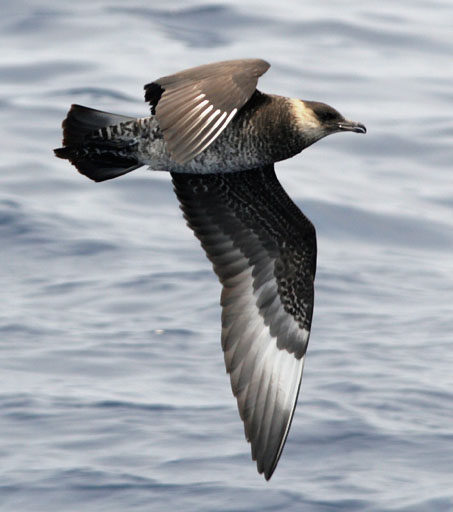
Order:
Charadriiformes
Charadriiformes (, from ''Charadrius'', the type genus of family Charadriidae) is a diverse order of small to medium-large birds. It includes about 390 species and has members in all parts of the world. Most charadriiform birds live near water an ...
Family:
Stercorariidae
Skuas and jaegers are medium to large
seabird
Seabirds (also known as marine birds) are birds that are adapted to life within the marine environment. While seabirds vary greatly in lifestyle, behaviour and physiology, they often exhibit striking convergent evolution, as the same enviro ...
s, typically with gray or brown plumage, often with white markings on the wings. They have longish bills with hooked tips and webbed feet with sharp claws. They look like large dark gulls, but have a fleshy
cere
The beak, bill, or rostrum is an external anatomical structure found mostly in birds, but also in turtles, non-avian dinosaurs and a few mammals. A beak is used for eating, preening, manipulating objects, killing prey, fighting, probing for food ...
above the upper mandible. They are strong, acrobatic fliers. Four species of the family have been recorded in Georgia.
*
South polar skua
The south polar skua (''Stercorarius maccormicki'') is a large seabird in the skua family, Stercorariidae. An older name for the bird is MacCormick's skua, after explorer and naval surgeon Robert McCormick, who first collected the type specimen. ...
, ''Stercorarius maccormicki'' (R)
*
Pomarine jaeger
The pomarine jaeger (''Stercorarius pomarinus''), pomarine skua, or pomatorhine skua, is a seabird in the skua family Stercorariidae. It is a migrant, wintering at sea in the tropical oceans.
Taxonomy
Its relationships are not fully resolved; i ...
, ''Stercorarius pomarinus''
*
Parasitic jaeger, ''Stercorarius parasiticus''
*
Long-tailed jaeger
The long-tailed skua or long-tailed jaeger (''Stercorarius longicaudus'') is a seabird in the skua family Stercorariidae.
Etymology
The word "jaeger" is derived from the German word ''Jäger'', meaning "hunter". The English word "skua" comes fr ...
, ''Stercorarius longicaudus'' (R)
Auks, murres, and puffins

Order:
Charadriiformes
Charadriiformes (, from ''Charadrius'', the type genus of family Charadriidae) is a diverse order of small to medium-large birds. It includes about 390 species and has members in all parts of the world. Most charadriiform birds live near water an ...
Family:
Alcidae
An auk or alcid is a bird of the family Alcidae in the order Charadriiformes. The alcid family includes the murres, guillemots, auklets, puffins, and murrelets. The word "auk" is derived from Icelandic ''álka'', from Old Norse ''alka'' (a ...
Alcids (auks and their relatives) are superficially similar to
penguins due to their black-and-white colors, their upright posture, and some of their habits; however they are not closely related to penguins and are (with one extinct exception) able to fly. Auks live on the open sea, only deliberately coming ashore to breed. Three species of auk have been recorded in Georgia.
*
Dovekie
The little auk or dovekie (''Alle alle'') is a small auk, the only member of the genus ''Alle''. ''Alle'' is the Sami name of the long-tailed duck; it is onomatopoeic and imitates the call of the drake duck. Linnaeus was not particularly fam ...
, ''Alle alle'' (R)
*
Razorbill
The razorbill, razor-billed auk, or lesser auk (''Alca torda'') is a colonial seabird and the only extant member of the genus '' Alca'' of the family Alcidae, the auks. It is the closest living relative of the extinct great auk (''Pinguinis im ...
, ''Alca torda''
*
Atlantic puffin, ''Fratercula arctica'' (accidental)
Gulls, terns, and skimmers


Order:
Charadriiformes
Charadriiformes (, from ''Charadrius'', the type genus of family Charadriidae) is a diverse order of small to medium-large birds. It includes about 390 species and has members in all parts of the world. Most charadriiform birds live near water an ...
Family:
Laridae
Laridae is a family of seabirds in the order Charadriiformes that includes the gulls, terns, skimmers and kittiwakes. It includes around 100 species arranged into 22 genera. They are an adaptable group of mostly aerial birds found worldwide. ...
The Laridae are a family of medium to large
seabird
Seabirds (also known as marine birds) are birds that are adapted to life within the marine environment. While seabirds vary greatly in lifestyle, behaviour and physiology, they often exhibit striking convergent evolution, as the same enviro ...
s containing the
gull
Gulls, or colloquially seagulls, are seabirds of the family Laridae in the suborder Lari. They are most closely related to the terns and skimmers and only distantly related to auks, and even more distantly to waders. Until the 21st century ...
s,
terns
Terns are seabirds in the family Laridae that have a worldwide distribution and are normally found near the sea, rivers, or wetlands. Terns are treated as a subgroup of the family Laridae which includes gulls and skimmers and consists of ...
, and
skimmers. They are typically gray or white, often with black markings on the head or wings. They have stout, longish bills and webbed feet. Twenty-nine species of larids have been definitively recorded in Georgia and two more are classed as provisional.
*
Black-legged kittiwake, ''Rissa tridactyla'' (R)
*
Ivory gull, ''Pagophila eburnea'' (R)
*
Sabine's gull
Sabine's gull ( ) (''Xema sabini'') also known as the fork-tailed gull or xeme, is a small gull. It is the only species placed in the genus ''Xema''. It breeds in colonies on coasts and tundra, laying two or three spotted olive-brown eggs in a gr ...
, ''Xema sabini'' (R)
*
Bonaparte's gull
Bonaparte's gull (''Chroicocephalus philadelphia'') is a member of the gull family Laridae found mainly in northern North America. At in length, it is one of the smallest species of gull. Its plumage is mainly white with grey upperparts. During ...
, ''Chroicocephalus philadelphia''
*
Black-headed gull
The black-headed gull (''Chroicocephalus ridibundus'') is a small gull that breeds in much of the Palearctic including Europe and also in coastal eastern Canada. Most of the population is migratory and winters further south, but some birds r ...
, ''Chroicocephalus ridibundus'' (R)
*
Little gull
The little gull (''Hydrocoloeus minutus'' or ''Larus minutus''), is a small gull that breeds in northern Europe and across the Palearctic. The genus name ''Hydrocoloeus'' is from Ancient Greek , "water", and , a sort of web-footed bird. The speci ...
, ''Hydrocoleus minutus'' (R)
*
Laughing gull
The laughing gull (''Leucophaeus atricilla'') is a medium-sized gull of North and South America. Named for its laugh-like call, it is an opportunistic omnivore and scavenger. It breeds in large colonies mostly along the Atlantic coast of North Am ...
, ''Leucophaeus atricilla''
*
Franklin's gull
Franklin's gull (''Leucophaeus pipixcan'') is a small (length 12.6–14.2 in, 32–36 cm) gull. The genus name ''Leucophaeus'' is from Ancient Greek ''leukos'', "white", and ''phaios'', "dusky". The specific ''pipixcan'' is a Nahuatl name f ...
, ''Leucophaeus pipixcan''
*
Heermann's gull
Heermann's gull (''Larus heermanni'') is a gull resident in the United States, Mexico and extreme southwestern British Columbia, nearly all nesting on Isla Rasa in the Gulf of California. They are usually found near shores or well out to sea, very ...
, ''Larus heermanni'' (accidental)
*
Ring-billed gull
The ring-billed gull (''Larus delawarensis'') is a medium-sized gull. The genus name is from Latin ''Larus'' which appears to have referred to a gull or other large seabird. The specific ''delawarensis'' refers to the Delaware River.
Description ...
, ''Larus delawarensis''
*
California gull
The California gull (''Larus californicus'') is a medium-sized gull, smaller on average than the herring gull but larger on average than the ring-billed gull, though it may overlap in size greatly with both.
Description
Adults are similar in ap ...
, ''Larus californicus'' (R)
*
Herring gull Herring gull is a common name for several birds in the genus '' Larus'', all formerly treated as a single species.
Three species are still combined in some taxonomies:
* American herring gull (''Larus smithsonianus'') - North America
* European ...
, ''Larus argentatus''
*
Iceland gull, ''Larus glaucoides'' (R)
*
Lesser black-backed gull
The lesser black-backed gull (''Larus fuscus'') is a large gull that breeds on the Atlantic coasts of Europe. It is migratory, wintering from the British Isles south to West Africa. It has increased dramatically in North America, most common alo ...
, ''Larus fuscus''
*
Glaucous gull, ''Larus hyperboreus''
*
Great black-backed gull
The great black-backed gull (''Larus marinus'') is the largest member of the gull family. Described by the Cornell Lab of Ornithology as "the king of the Atlantic waterfront", it is a very aggressive hunter, pirate, and scavenger. It breeds on t ...
, ''Larus marinus''
*
Brown noddy
The brown noddy or common noddy (''Anous stolidus'') is a seabird in the family Laridae. The largest of the noddies, it can be told from the closely related black noddy by its larger size and plumage, which is dark brown rather than black. The b ...
, ''Anous stolidus'' (R)
*
Sooty tern, ''Onychoprion fuscata''
*
Bridled tern
The bridled tern (''Onychoprion anaethetus'') is a seabird of the family Laridae. It is a bird of the tropical oceans. The scientific name is from Ancient Greek. The genus comes from ' meaning "claw" or "nail", and , meaning "saw". The specific ...
, ''Onychoprion anaethetus''
*
Least tern
The least tern (''Sternula antillarum'') is a species of tern that breeds in North America and locally in northern South America. It is closely related to, and was formerly often considered conspecific with, the little tern of the Old World. Ot ...
, ''Sternula antillarum''
*
Gull-billed tern
The gull-billed tern (''Gelochelidon nilotica''), formerly ''Sterna nilotica'', is a tern in the family Laridae. It is widely distributed and breeds in scattered localities in Europe, Asia, northwest Africa, and the Americas. The Australian gull ...
, ''Gelochelidon nilotica''
*
Caspian tern
The Caspian tern (''Hydroprogne caspia'') is a species of tern, with a subcosmopolitan but scattered distribution. Despite its extensive range, it is monotypic of its genus, and has no accepted subspecies. The genus name is from Ancient Greek ' ...
, ''Hydroprogne caspia''
*
Black tern
The black tern (''Chlidonias niger'') is a small tern generally found in or near inland water in Europe, Western Asia and North America. As its name suggests, it has predominantly dark plumage. In some lights it can appear blue in the breeding se ...
, ''Chlidonias niger''
*
White-winged tern
The white-winged tern, or white-winged black tern (''Chlidonias leucopterus'' or ''Chlidonias leucoptera''), is a species of tern in the family Laridae. It is a small species generally found in or near bodies of fresh water across much of the wo ...
, ''Chlidonias leucopterus'' (P)
*
Roseate tern, ''Sterna dougallii'' (P)
*
Common tern
The common tern (''Sterna hirundo'') is a seabird in the family Laridae. This bird has a circumpolar distribution, its four subspecies breeding in temperate and subarctic regions of Europe, Asia and North America. It is strongly migrator ...
, ''Sterna hirundo''
*
Arctic tern, ''Sterna paradisaea'' (R)
*
Forster's tern
Forster's tern (''Sterna forsteri'') is a tern in the family Laridae. The genus name ''Sterna'' is derived from Old English "stearn", "tern", and ''forsteri'' commemorates the naturalist Johann Reinhold Forster.
It breeds inland in North America ...
, ''Sterna forsteri''
*
Royal tern, ''Thalasseus maxima''
*
Sandwich tern
The Sandwich tern (''Thalasseus sandvicensis'') is a tern in the family Laridae. It is very closely related to the lesser crested tern (''T. bengalensis''), Chinese crested tern (''T. bernsteini''), Cabot's tern (''T. acuflavidus''), and elega ...
, ''Thalasseus sandvicensis''
*
Black skimmer, ''Rynchops niger''
Tropicbirds

Order:
Phaethontiformes
The Phaethontiformes are an order of birds. They contain one extant family, the tropicbirds (Phaethontidae), and one extinct family Prophaethontidae from the early Cenozoic. Several fossil genera have been described.
The tropicbirds were tradit ...
Family:
Phaethontidae
Tropicbirds are a family, Phaethontidae, of tropical pelagic seabirds. They are the sole living representatives of the order Phaethontiformes. For many years they were considered part of the Pelecaniformes, but genetics indicates they are most ...
Tropicbirds are slender white birds of tropical oceans with exceptionally long central tail feathers. Their long wings have black markings, as does the head. Two species of tropicbirds have been recorded in Georgia.
*
White-tailed tropicbird
The white-tailed tropicbird (''Phaethon lepturus'') is a tropicbird. It is the smallest of three closely related seabirds of the tropical oceans and smallest member of the order Phaethontiformes. It is found in the tropical Atlantic, western P ...
, ''Phaethon lepturus'' (R)
*
Red-billed tropicbird
The red-billed tropicbird (''Phaethon aethereus'') is a tropicbird, one of three closely related species of seabird of tropical oceans. Superficially resembling a tern in appearance, it has mostly white plumage with some black markings on the wi ...
, ''Phaeton aethereus'' (R)
Loons
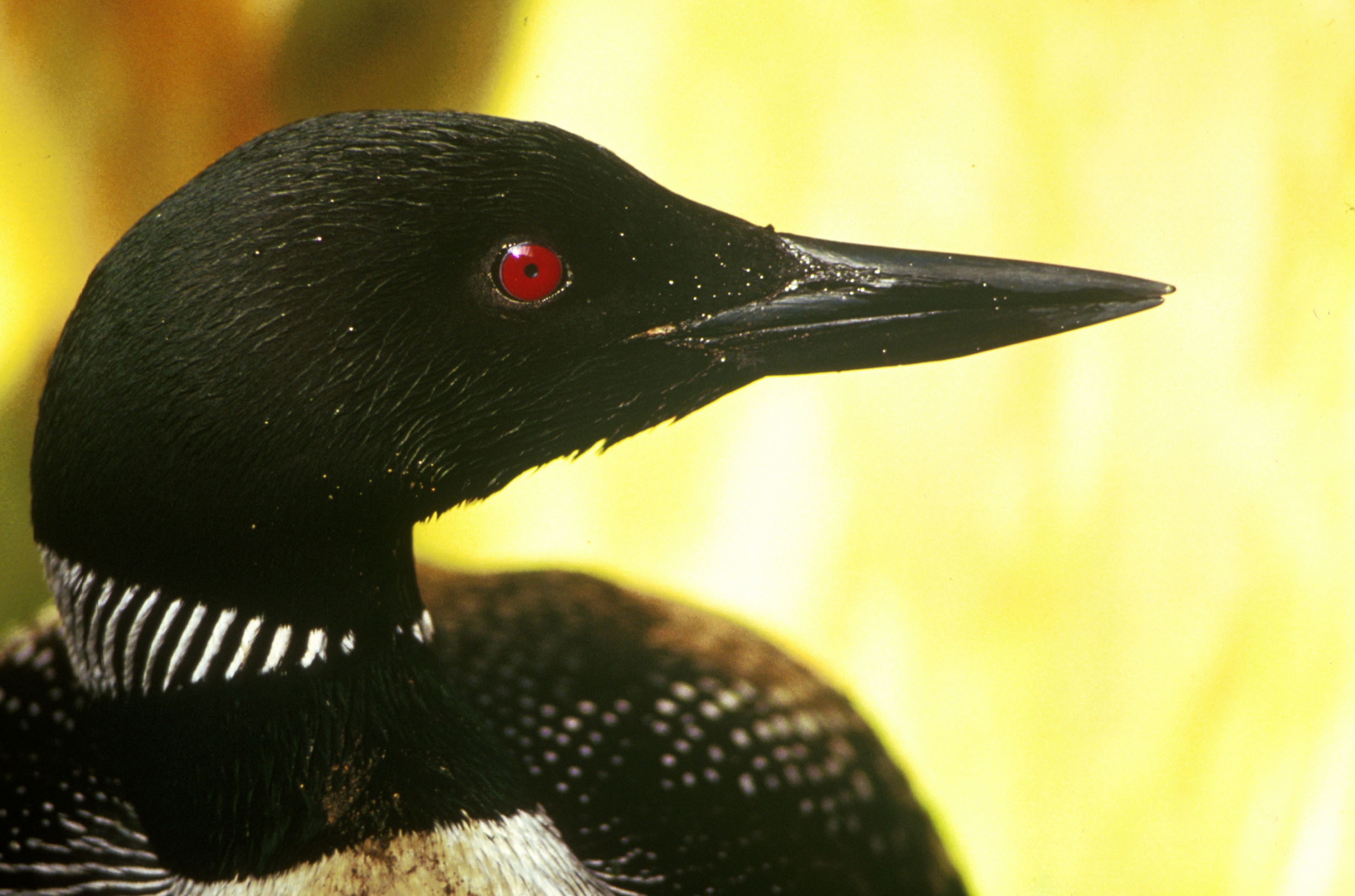
Order:
Gaviiformes
Gaviiformes is an order of aquatic birds containing the loons or divers and their closest extinct relatives. Modern gaviiformes are found in many parts of North America and northern Eurasia (Europe, Asia and debatably Africa), though prehistoric ...
Family:
Gaviidae
Loons are aquatic birds the size of a large duck, to which they are unrelated. With mostly black plumage and spear-shaped bills, loons swim well and fly adequately, but because their legs are placed towards the rear of the body, are clumsy on land. Four species of loons have occurred in Georgia.
*
Red-throated loon
The red-throated loon (North America) or red-throated diver (Britain and Ireland) (''Gavia stellata'') is a migratory aquatic bird found in the northern hemisphere. The most widely distributed member of the loon or diver family, it breeds prim ...
, ''Gavia stellata''
*
Pacific loon
The Pacific loon or Pacific diver (''Gavia pacifica''), is a medium-sized member of the loon, or diver, family.
Taxonomy and etymology
The Pacific loon, previously considered conspecific with the similar black-throated loon, was classified as ...
, ''Gavia pacifica'' (R)
*
Common loon
The common loon or great northern diver (''Gavia immer'') is a large member of the loon, or diver, family of birds. Breeding adults have a plumage that includes a broad black head and neck with a greenish, purplish, or bluish sheen, blackish ...
, ''Gavia immer''
*
Yellow-billed loon
The yellow-billed loon (''Gavia adamsii''), also known as the white-billed diver, is the largest member of the loon or diver family. Breeding adults have a black head, white underparts and chequered black-and-white mantle. Non-breeding plumage is ...
, ''Gavia adamsii'' (R)
Southern storm-petrels

Order:
Procellariiformes
Procellariiformes is an order (biology), order of seabirds that comprises four family (biology), families: the albatrosses, the Procellariidae, petrels and shearwaters, and two families of storm petrels. Formerly called Tubinares and still call ...
Family:
Oceanitidae
Austral storm petrels, or southern storm petrels, are seabirds in the family Oceanitidae, part of the order Procellariiformes. These smallest of seabirds feed on planktonic crustaceans and small fish picked from the surface, typically while hove ...
The storm-petrels are the smallest seabirds, relatives of the
petrel
Petrels are tube-nosed seabirds in the bird order Procellariiformes.
Description
The common name does not indicate relationship beyond that point, as "petrels" occur in three of the four families within that group (all except the albatross f ...
s, feeding on
plankton
Plankton are the diverse collection of organisms found in water (or air) that are unable to propel themselves against a current (or wind). The individual organisms constituting plankton are called plankters. In the ocean, they provide a crucia ...
ic crustaceans and small fish picked from the surface, typically while hovering. The flight is fluttering and sometimes
bat
Bats are mammals of the order Chiroptera.''cheir'', "hand" and πτερόν''pteron'', "wing". With their forelimbs adapted as wings, they are the only mammals capable of true and sustained flight. Bats are more agile in flight than most ...
-like. Until 2018, this family's three species were included with the other storm-petrels in family Hydrobatidae. One species of this family has been recorded in Georgia.
*Wilson's storm-petrel, ''Oceanites oceanicus''
Northern storm-petrels
Order:
Procellariiformes
Procellariiformes is an order (biology), order of seabirds that comprises four family (biology), families: the albatrosses, the Procellariidae, petrels and shearwaters, and two families of storm petrels. Formerly called Tubinares and still call ...
Family: Hydrobatidae
Though the members of this family are similar in many respects to the southern storm-petrels, including their general appearance and habits, there are enough genetic differences to warrant their placement in a separate family. Two species of this storm-petrel family have been recorded in Georgia.
*Leach's storm-petrel, ''Hydrobates leucorhous'' (R)
*Band-rumped storm-petrel, ''Hydrobates castro'' (R)
Shearwaters and petrels

Order:
Procellariiformes
Procellariiformes is an order (biology), order of seabirds that comprises four family (biology), families: the albatrosses, the Procellariidae, petrels and shearwaters, and two families of storm petrels. Formerly called Tubinares and still call ...
Family: Procellariidae
The procellariids are the main group of medium-sized "true
petrel
Petrels are tube-nosed seabirds in the bird order Procellariiformes.
Description
The common name does not indicate relationship beyond that point, as "petrels" occur in three of the four families within that group (all except the albatross f ...
s", characterized by united tubular nostrils with a median septum. Six species of procellarids have been definitively recorded in Georgia and another has been classed as provisional.
*Northern fulmar, ''Fulmarus glacialis'' (P)
*Black-capped petrel, ''Pterodoma hasitata''
*Cory's shearwater, ''Calonectris diomedea''
*Sooty shearwater, ''Ardenna griseus'' (R)
*Great shearwater, ''Ardenna gravis''
*Manx shearwater, ''Puffinus puffinus''
*Audubon's shearwater, ''Puffinus lherminieri''
Storks

Order: CiconiiformesFamily: Ciconiidae
Storks are large, heavy, long-legged, long-necked wading birds with long stout bills and wide wingspans. They lack the Down feather#Powder down, powder down that other wading birds such as herons, spoonbills and ibises use to clean off fish slime. Storks lack a syrinx and are mute. A single species of stork has been recorded in Georgia.
*Wood stork, ''Mycteria americana''
Frigatebirds
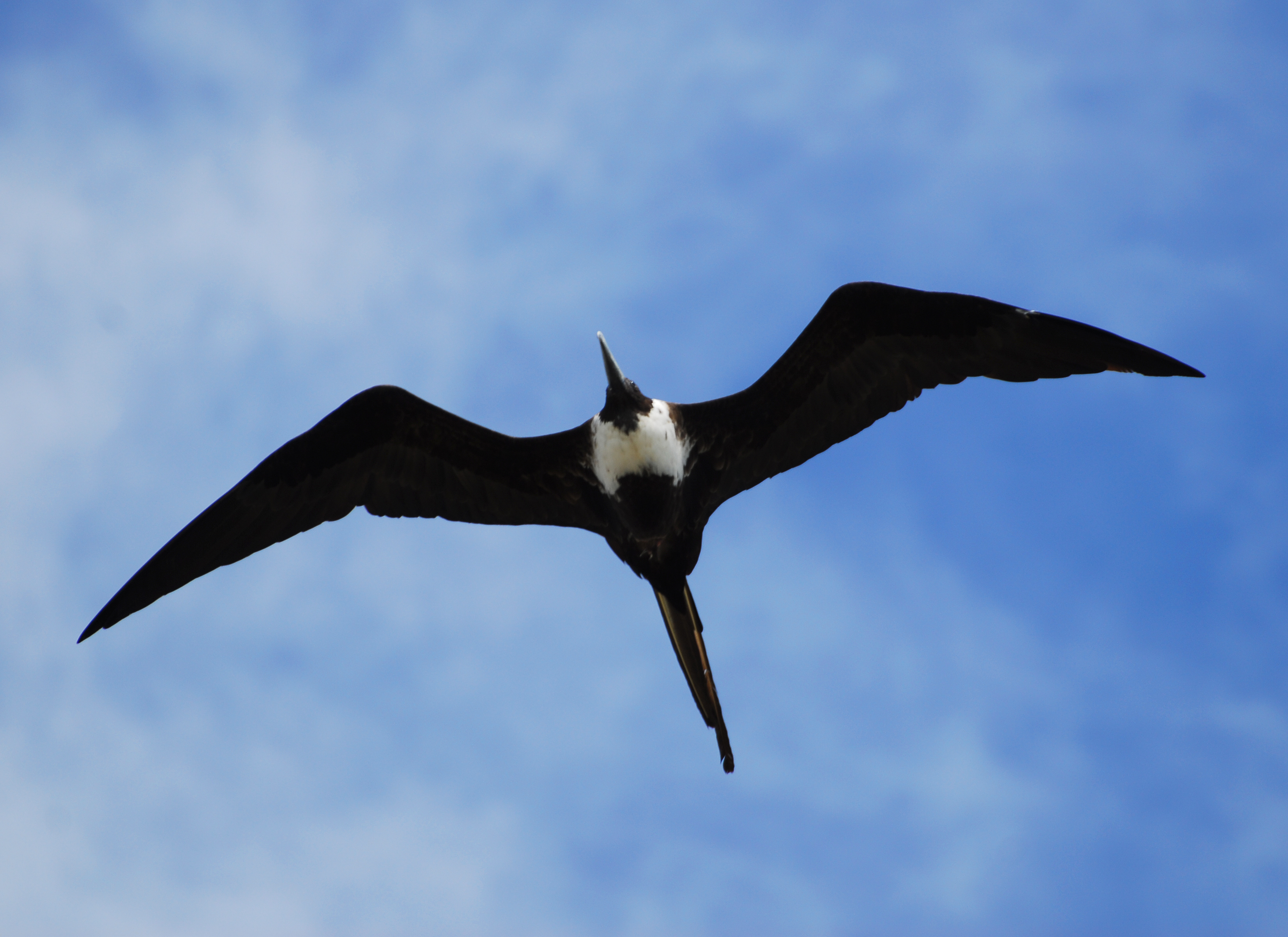
Order: SuliformesFamily: Fregatidae
Frigatebirds are large seabirds usually found over tropical oceans. They are large, black, or black and white, with long wings and deeply forked tails. The males have colored inflatable throat pouches. One species of frigatebird has been recorded in Georgia.
*Magnificent frigatebird, ''Fregata magnificens''
Boobies and gannets
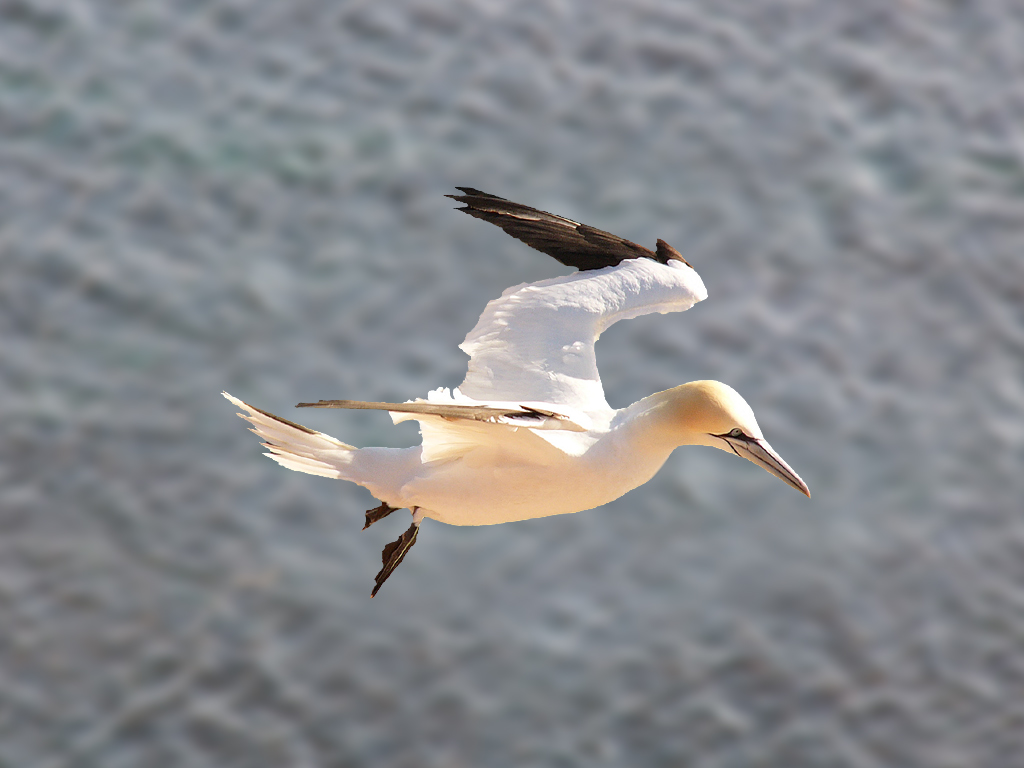
Order: SuliformesFamily: Sulidae
The sulids comprise the gannets and booby, boobies. Both groups are medium-large coastal
seabird
Seabirds (also known as marine birds) are birds that are adapted to life within the marine environment. While seabirds vary greatly in lifestyle, behaviour and physiology, they often exhibit striking convergent evolution, as the same enviro ...
s that plunge-dive for fish. Four species of sulid have been recorded in Georgia.
*Masked booby, ''Sula dactylatra'' (R)
*Brown booby, ''Sula leucogaster'' (R)
*Red-footed booby, ''Sula sula'' (R)
*Northern gannet, ''Morus bassanus''
Anhingas

Order: SuliformesFamily: Anhingidae
Anhingas are cormorant-like water birds with very long necks and long, straight beaks. They are fish eaters which often swim with only their neck above the water. One species of anhingidae has been recorded in Georgia.
*Anhinga, ''Anhinga anhinga''
Cormorants and shags

Order: SuliformesFamily: Phalacrocoracidae
Cormorants are medium-to-large aquatic birds, usually with mainly dark plumage and areas of colored skin on the face. The bill is long, thin, and sharply hooked. Three species of cormorant have been recorded in Georgia.
*Great cormorant, ''Phalacrocorax carbo'' (R)
*Double-crested cormorant, ''Nannopterum auritum''
*Neotropic cormorant, ''Nannopterum brasilianum'' (accidental)
Pelicans

Order: PelecaniformesFamily: Pelecanidae
Pelicans are very large water birds with a distinctive pouch under their beak. Like other birds in the order Pelecaniformes, they have four webbed toes. Both species of pelican that occur in North America have been recorded in Georgia.
*American white pelican, ''Pelecanus erythrorhynchos''
*Brown pelican, ''Pelecanus occidentalis''
Herons, egrets, and bitterns

Order: PelecaniformesFamily: Ardeidae
The family Ardeidae contains the herons, egrets, and bitterns. Herons and egrets are medium to large wading birds with long necks and legs. Bitterns tend to be shorter necked and more secretive. Twelve species of bitterns, herons, and egrets have been recorded in Georgia.
*American bittern, ''Botaurus lentiginosus''
*Least bittern, ''Ixobrychus exilis''
*Great blue heron, ''Ardea herodias''
*Great egret, ''Ardea alba''
*Snowy egret, ''Egretta thula''
*Little blue heron, ''Egretta caerulea''
*Tricolored heron, ''Egretta tricolor''
*Reddish egret, ''Egretta rufescens''
*Cattle egret, ''Bubulcus ibis''
*Green heron, ''Butorides virescens''
*Black-crowned night heron, Black-crowned night-heron, ''Nycticorax nycticorax''
*Yellow-crowned night heron, Yellow-crowned night-heron, ''Nyctanassa violacea''
Ibises and spoonbills
Order: PelecaniformesFamily: Threskiornithidae
The family Threskiornithidae includes the ibises and spoonbills. They have long, broad wings; the bill is also long, decurved in the case of the ibises, straight and distinctively flattened in the spoonbills. Three species of ibis and a single species of spoonbill have been recorded in Georgia.
*American white ibis, White ibis, ''Eudocimus albus''
*Glossy ibis, ''Plegadis falcinellus''
*White-faced ibis, ''Plegadis chihi'' (R)
*Roseate spoonbill, ''Platalea ajaja''
New World vultures

Order: CathartiformesFamily: Cathartidae
New World vultures are not closely related to Old World vultures, but superficially resemble them because of convergent evolution. Like the Old World vultures, they are scavengers; however, unlike Old World vultures, which find carcasses by sight, New World vultures have a good sense of smell with which they locate Carrion, carcasses. Two species of New World vulture have been recorded in Georgia.
*Black vulture, ''Coragyps atratus''
*Turkey vulture, ''Cathartes aura''
Osprey
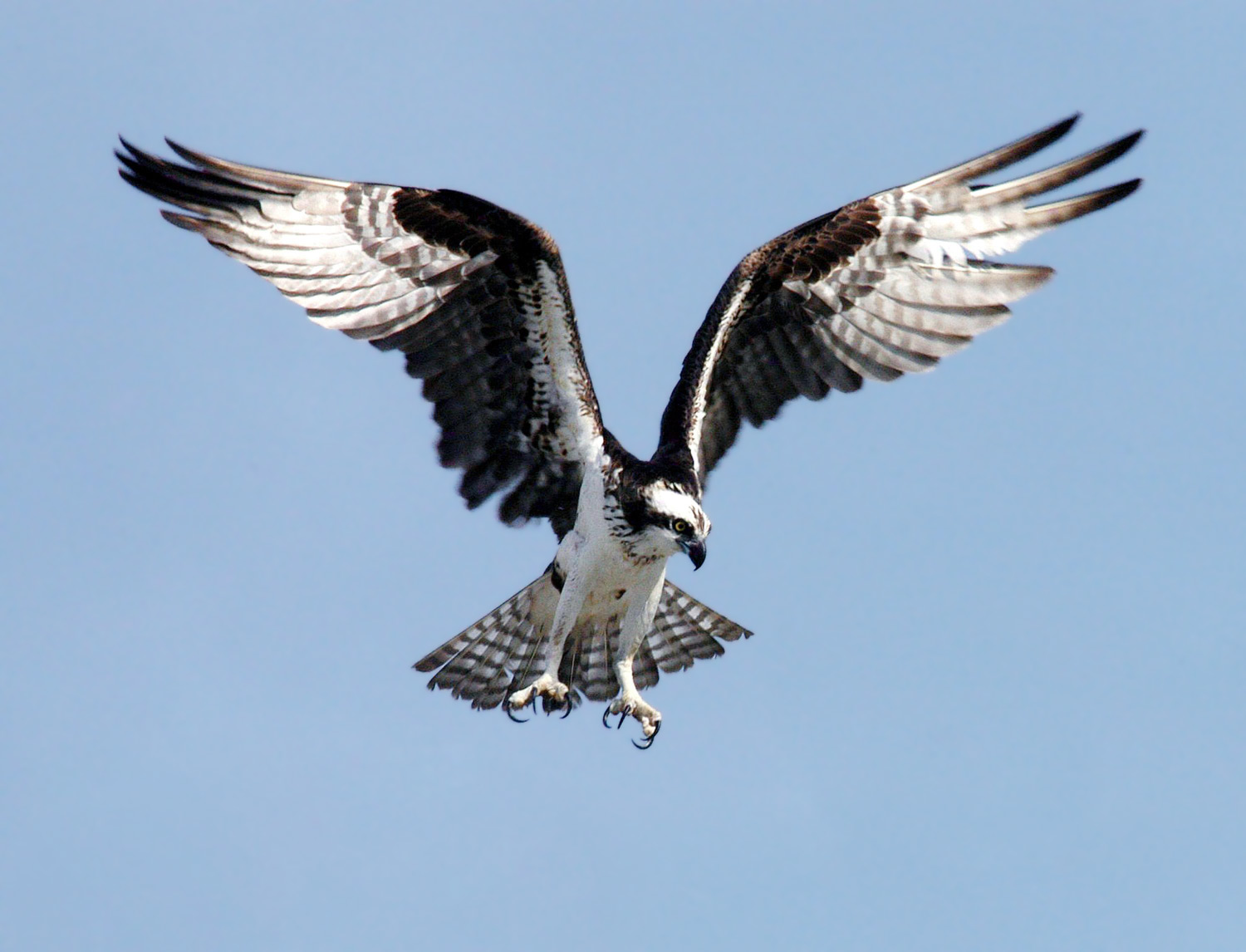
Order: AccipitriformesFamily: Pandionidae
Pandionidae is a family of fish-eating birds of prey, possessing a very large, powerful hooked beak for tearing flesh from their prey, strong legs, powerful talons, and keen eyesight. The family is monotypic; its sole member, the osprey, has been recorded in Georgia.
*Osprey, ''Pandion haliaetus''
Hawks, eagles, and kites

Order: AccipitriformesFamily: Accipitridae
Accipitridae is a family of birds of prey that includes hawks, eagles, kites, harriers, and Old World vultures. They have very large, hooked beaks for tearing flesh from their prey, strong legs, powerful talons, and keen eyesight. Fourteen species of this family have been definitively recorded in Georgia and another has been classed as provisional.
*Swallow-tailed kite, ''Elanoides forficatus''
*Hook-billed kite, ''Chondrohierax uncinatus'' (accidental)
*Golden eagle, ''Aquila chrysaetos''
*Northern harrier, ''Circus hudsonius''
*Sharp-shinned hawk, ''Accipiter striatus''
*Cooper's hawk, ''Accipiter cooperii''
*American goshawk, ''Accipiter atricapillus'' (R)
*Bald eagle, ''Haliaeetus leucocephalus''
*Mississippi kite, ''Ictinia mississippiensis''
*Red-shouldered hawk, ''Buteo lineatus''
*Short-tailed hawk, ''Buteo brachyurus'' (R)
*Broad-winged hawk, ''Buteo platypterus''
*Swainson's hawk, ''Buteo swainsoni'' (P)
*Red-tailed hawk, ''Buteo jamaicensis''
*Rough-legged hawk, ''Buteo lagopus'' (R)
Barn-owls
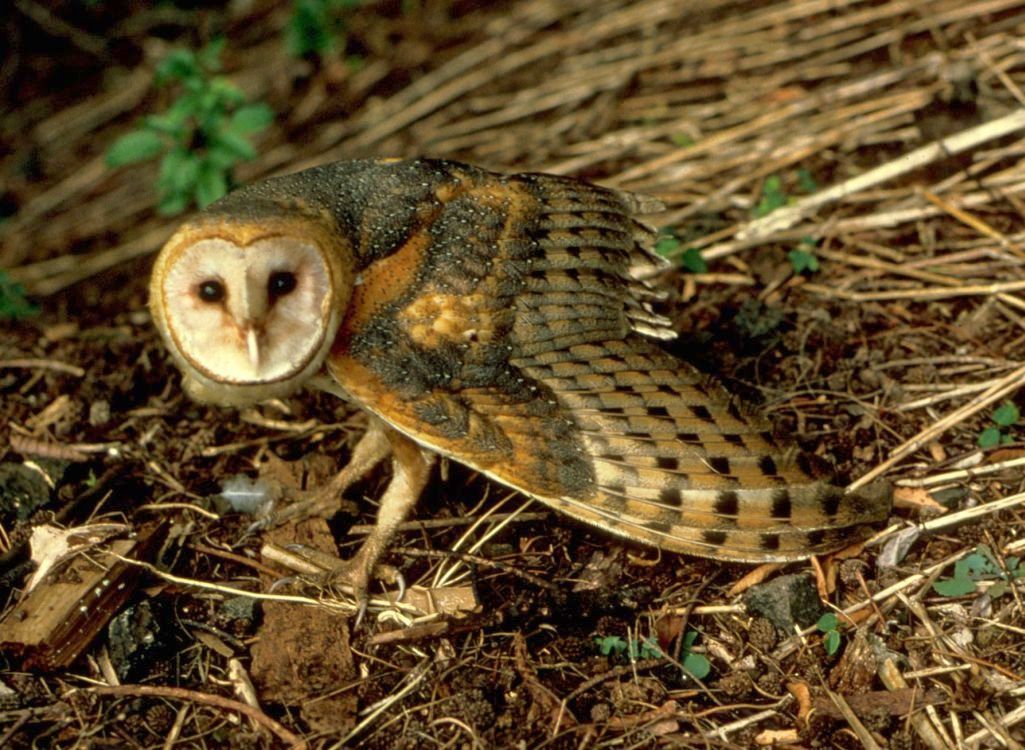
Order: StrigiformesFamily: Tytonidae
Barn-owls are medium to large owls with large heads and characteristic heart-shaped faces. They have long strong legs with powerful talons. A single species of barn-owl has been recorded in Georgia.
*Barn owl, ''Tyto alba''
Owls
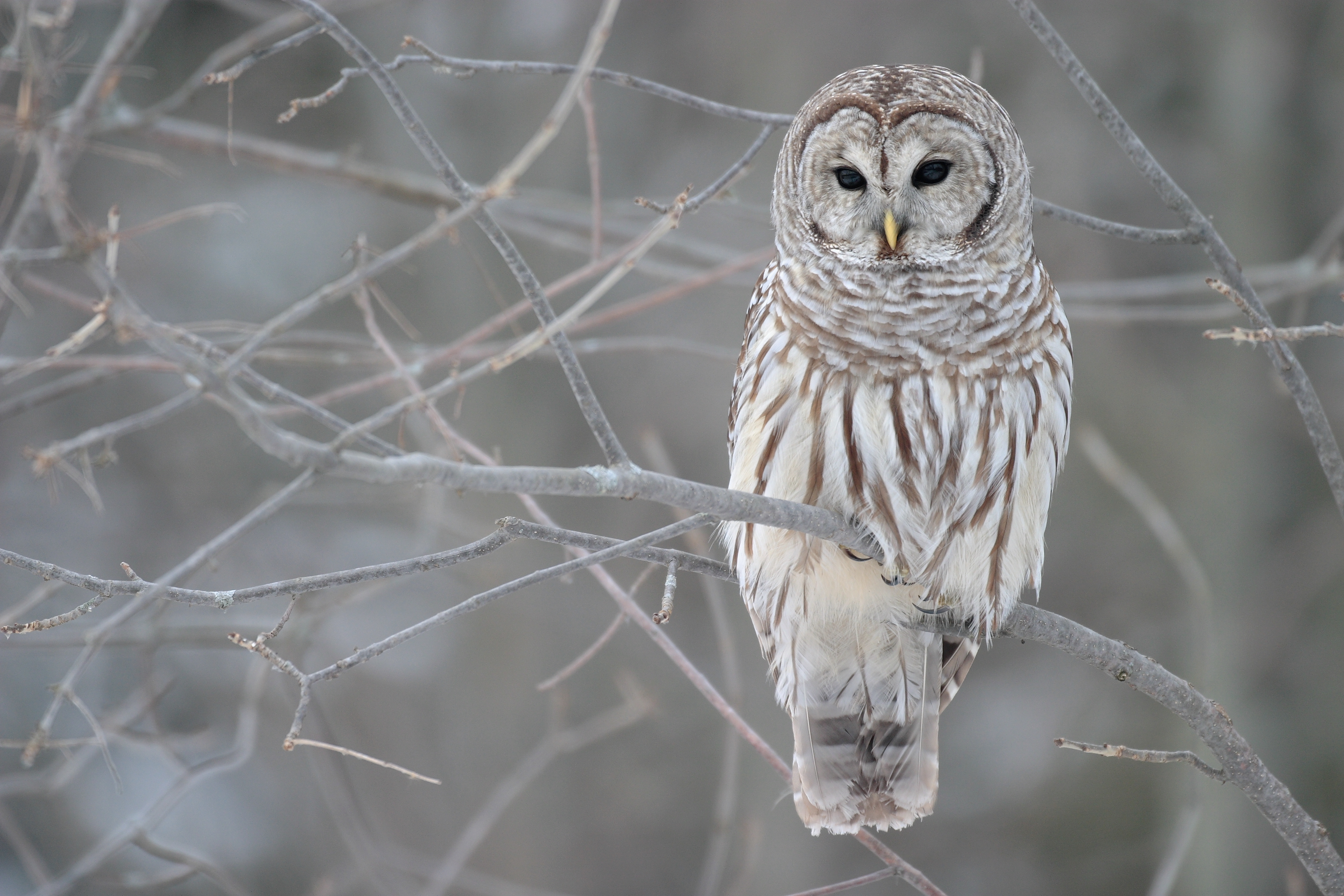
Order: StrigiformesFamily: Strigidae
Typical owls are small to large solitary nocturnal birds of prey. They have large forward-facing eyes and ears, a hawk-like beak, and a conspicuous circle of feathers around each eye called a facial disk. Eight species of owl have been recorded in Georgia.
*Eastern screech-owl, ''Megascops asio''
*Great horned owl, ''Bubo virginianus''
*Snowy owl, ''Bubo scandiacus'' (R)
*Burrowing owl, ''Athene cunicularia'' (R)
*Barred owl, ''Strix varia''
*Long-eared owl, ''Asio otus'' (R)
*Short-eared owl, ''Asio flammeus''
*Northern saw-whet owl, ''Aegolius acadicus'' (R)
Kingfishers

Order: CoraciiformesFamily: Alcedinidae
Kingfishers are medium-sized birds with large heads, long pointed bills, short legs, and stubby tails. Two species of kingfisher has been recorded in Georgia.
*Ringed kingfisher, ''Megaceryle torquata'' (accidental)
*Belted kingfisher, ''Megaceryle alcyon''
Woodpeckers

Order: PiciformesFamily: Picidae
Woodpeckers are small to medium-sized birds with chisel-like beaks, short legs, stiff tails, and long tongues used for capturing insects. Some species have feet with two toes pointing forward and two backward, while several species have only three toes. Many woodpeckers have the habit of tapping noisily on tree trunks with their beaks. Nine species of woodpecker have been recorded in Georgia.
*Red-headed woodpecker, ''Melanerpes erythrocephalus''
*Red-bellied woodpecker, ''Melanerpes carolinus''
*Yellow-bellied sapsucker, ''Sphyrapicus varius''
*Downy woodpecker, ''Dryobates pubescens''
*Red-cockaded woodpecker, ''Dryobates borealis''
*Hairy woodpecker, ''Dryobates villosus''
*Northern flicker, ''Colaptes auratus''
*Pileated woodpecker, ''Dryocopus pileatus''
*Ivory-billed woodpecker, ''Campephilus principalis'' (R) (E?)
Falcons and caracaras

Order: FalconiformesFamily: Falconidae
The Falconidae is a family of diurnal birds of prey containing the falcons and Caracara (subfamily), caracaras. They differ from hawks, eagles, and kites in that they kill with their beaks instead of their talons. Four species of falcon have been recorded in Georgia.
*Crested caracara, ''Caracara plancus'' (R)
*American kestrel, ''Falco sparverius''
*Merlin (bird), Merlin, ''Falco columbarius''
*Peregrine falcon, ''Falco peregrinus''
Tyrant flycatchers

Order: PasseriformesFamily: Tyrannidae
Tyrant flycatchers are passerines which occur throughout North and South America. They superficially resemble the Old World flycatchers, but are more robust and have stronger bills. They do not have the sophisticated vocal capabilities of the songbirds. Most, but not all, are rather plain. As the name implies, most are insectivorous. Twenty-one species of tyrant flycatcher have been recorded in Georgia.
*Ash-throated flycatcher, ''Myiarchus cinerascens'' (R)
*Great crested flycatcher, ''Myiarchus crinitus''
*Tropical kingbird, ''Tyrannus melancholicus'' (R)
*Couch's kingbird, ''Tyrannus couchii'' (accidental)
*Western kingbird, ''Tyrannus verticalis''
*Eastern kingbird, ''Tyrannus tyrannus''
*Grey kingbird, Gray kingbird, ''Tyrannus dominicensis''
*Scissor-tailed flycatcher, ''Tyrannus forficatus''
*Fork-tailed flycatcher, ''Tyrannus savana'' (accidental)
*Olive-sided flycatcher, ''Contopus cooperi''
*Eastern wood pewee, Eastern wood-pewee, ''Contopus virens''
*Yellow-bellied flycatcher, ''Empidonax flaviventris''
*Acadian flycatcher, ''Empidonax virescens''
*Alder flycatcher, ''Empidonax alnorum''
*Willow flycatcher, ''Empidonax traillii''
*Least flycatcher, ''Empidonax minimus''
*Hammond's flycatcher, ''Empidonax hammondii'' (accidental)
*American dusky flycatcher, Dusky flycatcher, ''Empidonax oberholseri'' (R)
*Eastern phoebe, ''Sayornis phoebe''
*Say's phoebe, ''Sayornis saya'' (R)
Vireos, shrike-babblers, and erpornis
Order: PasseriformesFamily: Vireonidae
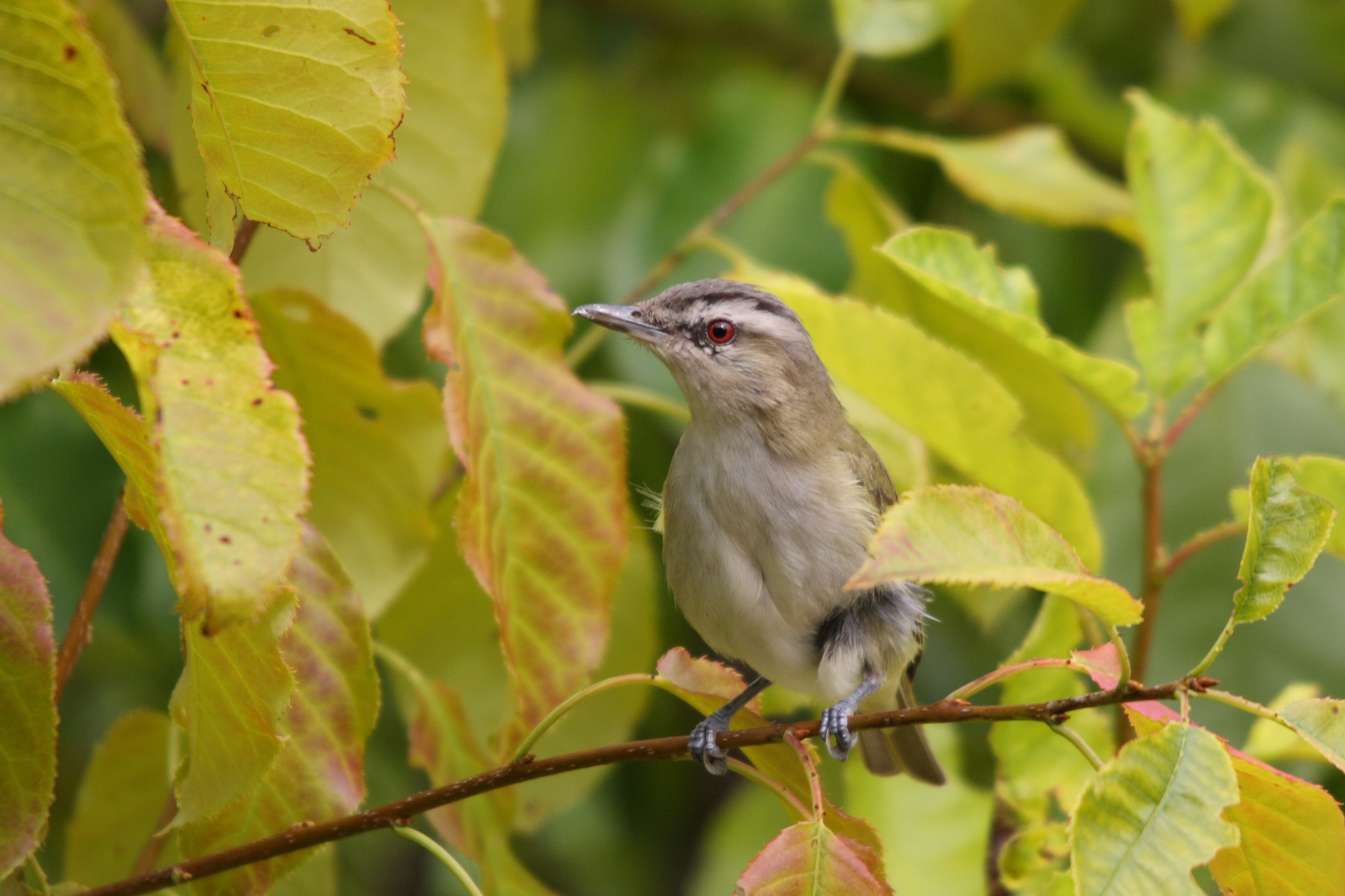
The vireos are a group of small to medium-sized passerines. They are typically greenish in color and resemble wood-warblers apart from their heavier bills. Seven species of vireo have been recorded in Georgia.
*White-eyed vireo, ''Vireo griseus''
*Bell's vireo, ''Vireo bellii'' (R)
*Yellow-throated vireo, ''Vireo flavifrons''
*Blue-headed vireo, ''Vireo solitarius''
*Philadelphia vireo, ''Vireo philadelphicus''
*Warbling vireo, ''Vireo gilvus''
*Red-eyed vireo, ''Vireo olivaceus''
Shrikes

Order: PasseriformesFamily: Laniidae
Shrikes are passerines known for their habit of catching other birds and small animals and impaling the uneaten portions of their bodies on thorns. A shrike's beak is hooked, like that of a typical bird of prey. One species of shrike has been recorded in Georgia.
*Loggerhead shrike, ''Lanius ludovicianus''
Crows, jays, and magpies

Order: PasseriformesFamily: Corvidae
The family Corvidae includes crows, ravens, jays, choughs, magpies, treepies, nutcrackers, and ground jays. Corvids are above average in size among the Passeriformes, and some of the larger species show high levels of intelligence. Five species of corvids have been recorded in Georgia.
*Blue jay, ''Cyanocitta cristata''
*Florida scrub jay, Florida scrub-jay, ''Aphelocoma coerulescens'' (R)
*American crow, ''Corvus brachyrhynchos''
*Fish crow, ''Corvus ossifragus''
*Common raven, ''Corvus corax''
Tits, chickadees, and titmice

Order: PasseriformesFamily: Paridae
The Paridae are mainly small stocky woodland species with short stout bills. Some have crests. They are adaptable birds, with a mixed diet including seeds and insects. Two species of parids have been recorded in Georgia.
*Carolina chickadee, ''Poecile carolinensis''
*Tufted titmouse, ''Baeolophus bicolor''
Larks
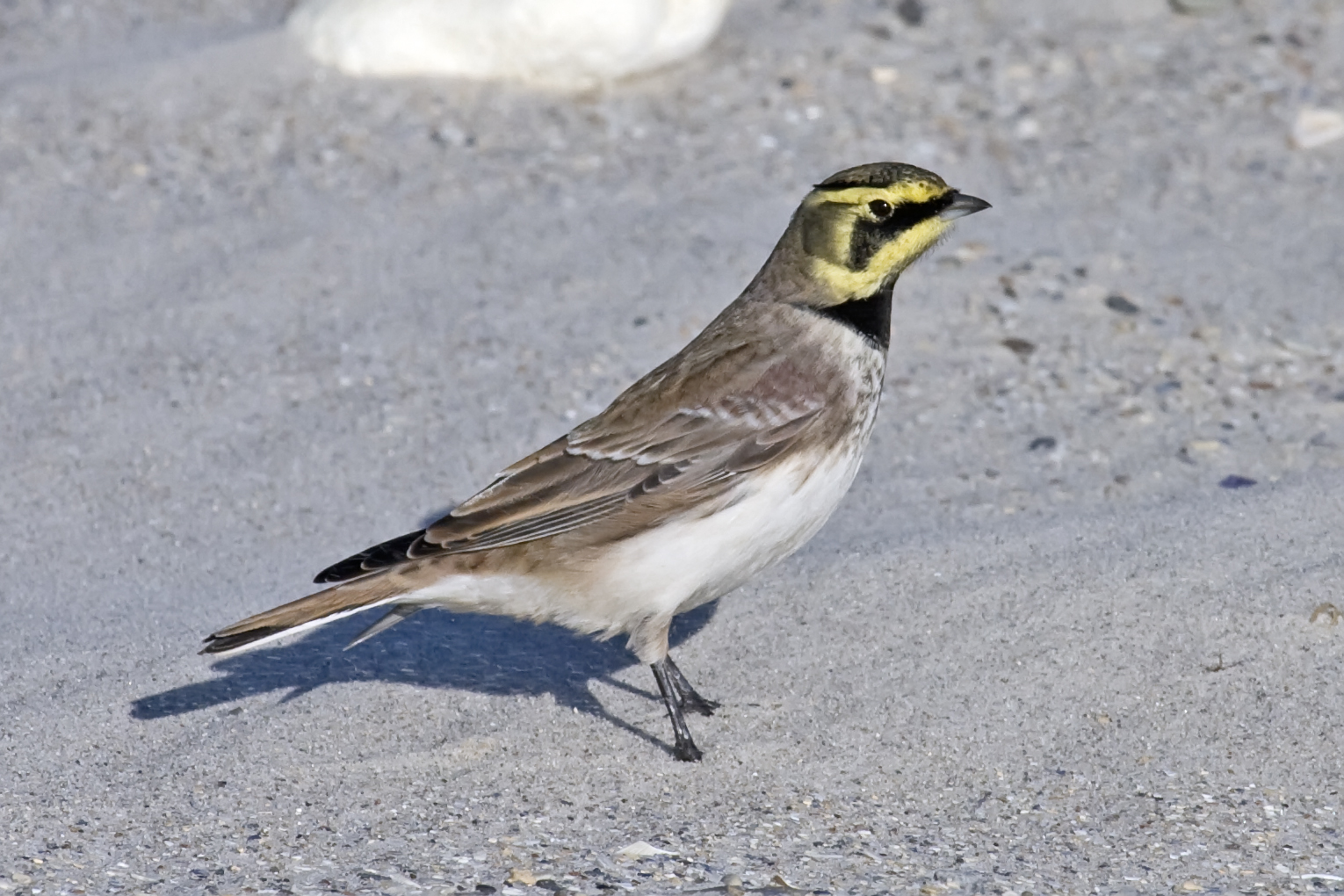
Order: PasseriformesFamily: Alaudidae
Larks are small terrestrial birds with often extravagant songs and display flights. Most larks are fairly dull in appearance. Their food is insects and seeds. One species of lark has been recorded in Georgia.
*Horned lark, ''Eremophila alpestris''
Swallows
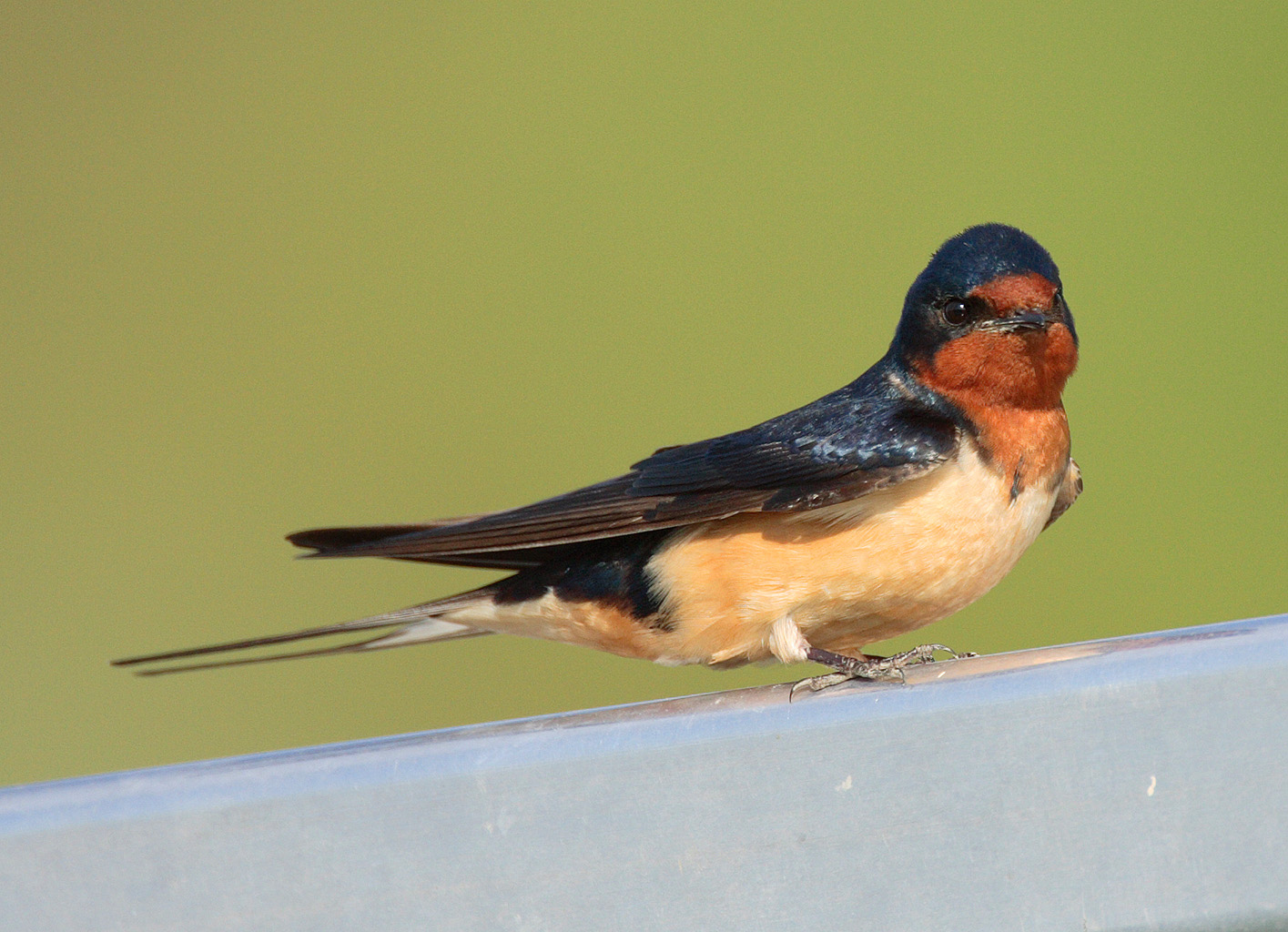
Order: PasseriformesFamily: Hirundinidae
The family Hirundinidae is adapted to aerial feeding. They have a slender streamlined body, long pointed wings, and a short bill with a wide gape. The feet are adapted to perching rather than walking, and the front toes are partly joined at the base. Seven species of swallows have been recorded in Georgia.
*Bank swallow, ''Riparia riparia''
*Tree swallow, ''Tachycineta bicolor''
*Northern rough-winged swallow, ''Stelgidopteryx serripennis''
*Purple martin, ''Progne subis''
*Barn swallow, ''Hirundo rustica''
*American cliff swallow, Cliff swallow, ''Petrochelidon pyrrhonota''
*Cave swallow, ''Petrochelidon fulva'' (R)
Kinglets

Order: PasseriformesFamily: Regulidae
The kinglets are a small family of birds which resemble the titmice. They are very small insectivorous birds in the genus ''Regulus''. The adults have colored crowns, giving rise to their name. Two species of kinglet have been recorded in Georgia.
*Ruby-crowned kinglet, ''Corthylio calendula''
*Golden-crowned kinglet, ''Regulus satrapa''
Waxwings

Order: PasseriformesFamily: Bombycillidae
The waxwings are a group of passerine birds with soft silky plumage and unique red tips to some of the wing feathers. In the Bohemian and cedar waxwings, these tips look like sealing wax and give the group its name. These are arboreal birds of northern forests. They live on insects in summer and berries in winter. One species of waxwing has been recorded in Georgia.
*Cedar waxwing, ''Bombycilla cedrorum''
Nuthatches

Order: PasseriformesFamily: Sittidae
Nuthatches are small woodland birds. They have the unusual ability to climb down trees head first, unlike most other birds which can only go upwards. Nuthatches have big heads, short tails, and powerful bills and feet. Three species of nuthatches have been recorded in Georgia.
*Red-breasted nuthatch, ''Sitta canadensis''
*White-breasted nuthatch, ''Sitta carolinensis''
*Brown-headed nuthatch, ''Sitta pusilla''
Treecreepers
Order: PasseriformesFamily: Certhiidae
Treecreepers are small woodland birds, brown above and white below. They have thin pointed down-curved bills, which they use to extricate insects from bark. They have stiff tail feathers, like woodpeckers, which they use to support themselves on vertical trees. A single species of treecreeper has been recorded in Georgia.
*Brown creeper, ''Certhia americana''
Gnatcatchers

Order: PasseriformesFamily: Polioptilidae
The family Polioptilidae is a group of small insectivorous passerine birds containing the gnatcatchers and gnatwrens. One species of gnatcatcher has been recorded in Georgia.
*Blue-gray gnatcatcher, ''Polioptila caerulea''
Wrens
Order: PasseriformesFamily: Troglodytidae
Wrens are small and inconspicuous birds, except for their loud songs. They have short wings and thin down-turned bills. Several species often hold their tails upright. All are insectivorous. Seven species of wren have been recorded in Georgia.
*Rock wren, ''Salpinctes obsoletus'' (accidental)
*House wren, ''Troglodytes aedon''
*Winter wren, ''Troglodytes hyemalis''
*Sedge wren, ''Cistothorus platensis''
*Marsh wren, ''Cistothorus palustris''
*Carolina wren, ''Thryothorus ludovicianus''
*Bewick's wren, ''Thryomanes bewickii'' (R)
Mockingbirds and thrashers
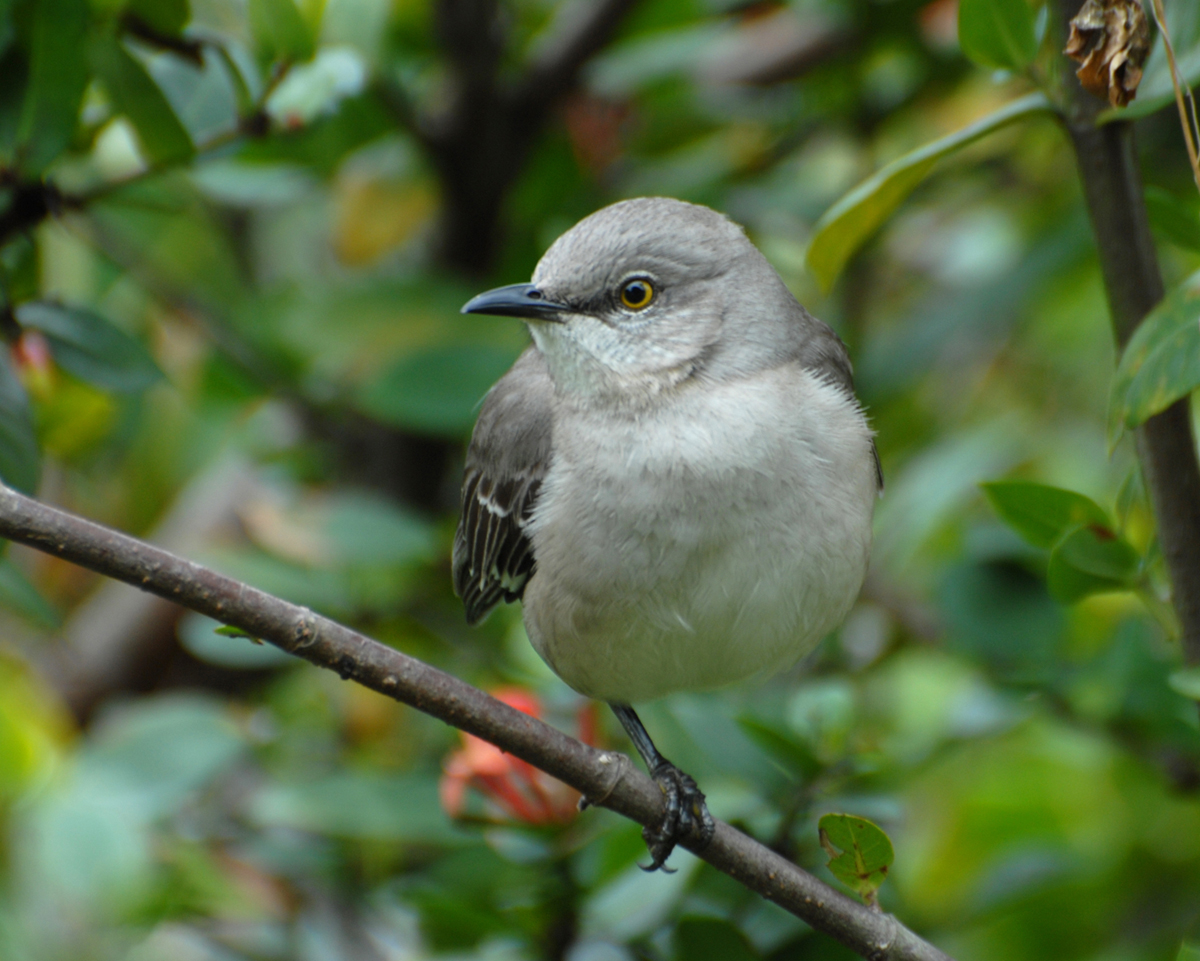
Order: PasseriformesFamily: Mimidae
The Mimidae, or mimic thrushes, are a family of passerine birds which includes thrashers, mockingbirds, tremblers, and the New World catbirds. They are notable for their vocalization, especially their remarkable ability to mimic a wide variety of birds and other sounds heard outdoors. Four species of mimic thrush have been recorded in Georgia.
*Grey catbird, Gray catbird, ''Dumetella carolinensis''
*Brown thrasher, ''Toxostoma rufum''
*Sage thrasher, ''Oreoscoptes montanus'' (R)
*Northern mockingbird, ''Mimus polyglottos''
Starlings
Order: PasseriformesFamily: Sturnidae
Starlings are small to medium-sized passerines with strong feet. Their flight is strong and direct and they are very gregarious. Their preferred habitat is open country, and they eat insects and fruit. Their plumage is typically dark with a metallic sheen. A single species of starling is established in Georgia.
*European starling, ''Sturnus vulgaris'' (I)
Thrushes and allies

Order: PasseriformesFamily: Turdidae
The thrushes are a group of passerine birds that occur mainly but not exclusively in the Old World. They are plump, soft plumaged, small to medium-sized insectivores or sometimes omnivores, often feeding on the ground. Many have attractive songs. Ten species of thrushes have been recorded in Georgia.
*Eastern bluebird, ''Sialia sialis''
*Mountain bluebird, ''Sialia currucoides'' (R)
*Veery, ''Catharus fuscescens''
*Gray-cheeked thrush, ''Catharus minimus''
*Bicknell's thrush, ''Catharus bicknelli'' (R)
*Swainson's thrush, ''Catharus ustulatus''
*Hermit thrush, ''Catharus guttatus''
*Wood thrush, ''Hylocichla mustelina''
*American robin, ''Turdus migratorius''
*Varied thrush, ''Ixoreus naevius'' (R)
Old World flycatchers
Order: PasseriformesFamily: Muscicapidae
The Old World flycatchers form a large family of small passerine birds. These are mainly small arboreal insectivores, many of which, as the name implies, take their prey on the wing.
*Northern wheatear, ''Oenanthe oenanthe'' (R)
Old World sparrows
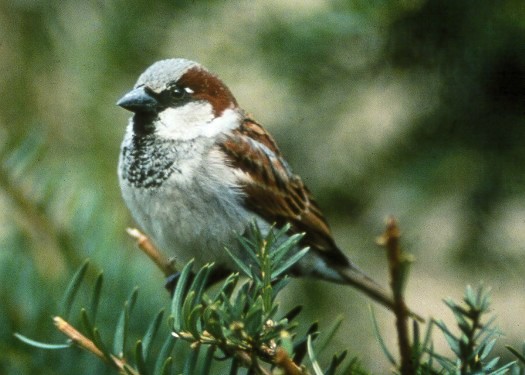
Order: PasseriformesFamily: Passeridae
Old World sparrows, also known sometimes as weaver finches, are small passerine birds. In general, sparrows tend to be small plump brownish or grayish birds with short tails and short powerful beaks. Sparrows are seed eaters, but they also consume small insects. A single species of Old World sparrow is established in Georgia.
*House sparrow, ''Passer domesticus'' (I)
Wagtails and pipits

Order: PasseriformesFamily: Motacillidae
Motacillidae is a family of small passerine birds with medium to long tails. They include the wagtails, longclaws, and pipits. They are slender, ground-feeding insectivores of open country. Two species of pipit have been recorded in Georgia.
*American pipit, ''Anthus rubescens''
*Sprague's pipit, ''Anthus spragueii'' (R)
Finches, euphonias, and allies

Order: PasseriformesFamily: Fringillidae
Finches are seed-eating passerines. They are small to moderately large and have strong, usually conical and sometimes very large, beaks. All have twelve tail feathers and nine primaries. They have a bouncing flight with alternating bouts of flapping and gliding on closed wings, and most sing well. Eight species of finches have been recorded in Georgia.
*Evening grosbeak, ''Coccothraustes vespertinus'' (R)
*House finch, ''Haemorhous mexicanus'' (native to the southwestern U.S.; introduced in the east)
*Common redpoll, ''Acanthis flammea'' (R)
*Purple finch, ''Haemorhous purpureus''
*Red crossbill, ''Loxia curvirostra''
*White-winged crossbill, ''Loxia leucoptera'' (R)
*Pine siskin, ''Spinus pinus''
*American goldfinch, ''Spinus tristis''
Longspurs and snow buntings
Order: PasseriformesFamily: Calcariidae
The Calcariidae are a group of passerine birds that had been traditionally grouped with the New World sparrows, but differ in a number of respects and are usually found in open grassy areas. Four species of Calcariidae have been recorded in Georgia.
*Lapland longspur, ''Calcarius lapponicus''
*Smith's longspur, ''Calcarius pictus'' (R)
*Thick-billed longspur, ''Rhynchophanes mccownii'' (R)
*Snow bunting, ''Plectrophenax nivalis'' (R)
New World sparrows

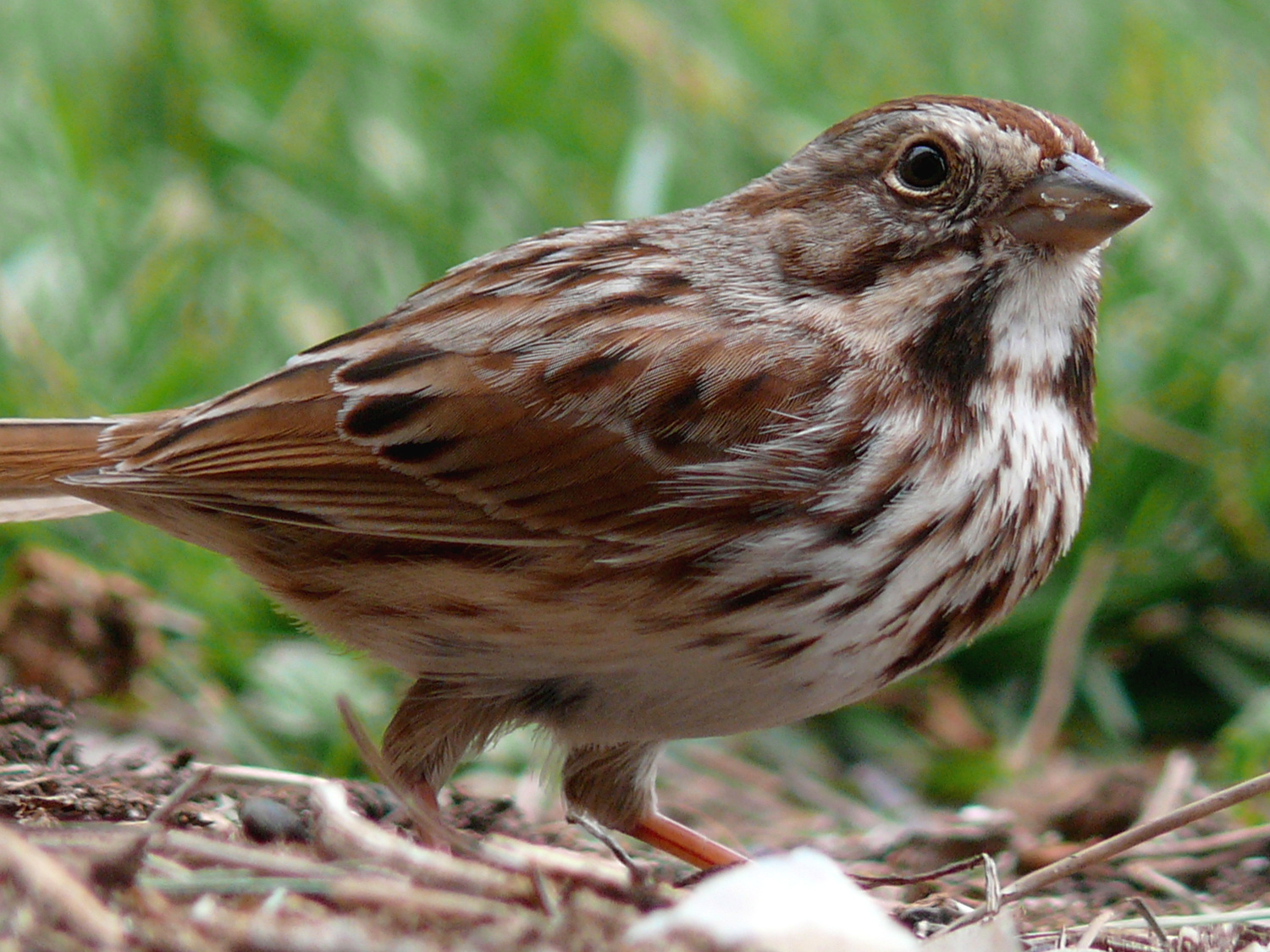
Order: PasseriformesFamily: Passerellidae
Until 2017, these species were considered part of the family Emberizidae. Most of the species are known as sparrows, but these birds are not closely related to the Old World sparrows which are in the family Passeridae. Many of these have distinctive head patterns. Twenty-seven species of Passerellidae have been recorded in Georgia.
*Bachman's sparrow, ''Peucaea aestivalis''
*Grasshopper sparrow, ''Ammodramus savannarum''
*Lark sparrow, ''Chondestes grammacus''
*Lark bunting, ''Calamospiza melanocorys'' (R)
*Chipping sparrow, ''Spizella passerina''
*Clay-colored sparrow, ''Spizella pallida''
*Field sparrow, ''Spizella pusilla''
*Fox sparrow, ''Passerella iliaca''
*American tree sparrow, ''Spizelloides arborea'' (R)
*Dark-eyed junco, ''Junco hyemalis''
*White-crowned sparrow, ''Zonotrichia leucophrys''
*Harris's sparrow, ''Zonotrichia querula'' (R)
*White-throated sparrow, ''Zonotrichia albicollis''
*Vesper sparrow, ''Pooecetes gramineus''
*LeConte's sparrow, ''Ammospiza leconteii''
*Seaside sparrow, ''Ammospiza maritima''
*Nelson's sparrow, ''Ammospiza nelsoni''
*Saltmarsh sparrow, ''Ammospiza caudacta''
*Baird's sparrow, ''Centronyx bairdii'' (accidental)
*Henslow's sparrow, ''Centronyx henslowii''
*Savannah sparrow, ''Passerculus sandwichensis''
*Song sparrow, ''Melospiza melodia''
*Lincoln's sparrow, ''Melospiza lincolnii''
*Swamp sparrow, ''Melospiza georgiana''
*Green-tailed towhee, ''Pipilo chlorurus'' (R)
*Spotted towhee, ''Pipilo maculatus'' (R)
*Eastern towhee, ''Pipilo erythrophthalmus''
Yellow-breasted chat
Order: PasseriformesFamily: Icteriidae
This species was historically placed in the wood-warblers (Parulidae) but nonetheless most authorities were unsure if it belonged there. It was placed in its own family in 2017.
*Yellow-breasted chat, ''Icteria virens''
Troupials and allies

Order: PasseriformesFamily: Icteridae
The icterids are a group of small to medium-sized, often colorful, passerines restricted to the New World, including the grackles, New World blackbirds, and New World orioles. Most have black as a predominant plumage color, often enlivened by yellow, orange, or red. Fifteen species of icterids have been recorded in Georgia.
*Yellow-headed blackbird, ''Xanthocephalus xanthocephalus''
*Bobolink, ''Dolichonyx oryzivorus''
*Eastern meadowlark, ''Sturnella magna''
*Western meadowlark, ''Sturnella neglecta'' (R)
*Orchard oriole, ''Icterus spurius''
*Bullock's oriole, ''Icterus bullockii'' (R)
*Baltimore oriole, ''Icterus galbula''
*Scott's oriole, ''Icterus parisorum'' (R)
*Red-winged blackbird, ''Agelaius phoeniceus''
*Shiny cowbird, ''Molothrus bonariensis'' (R)
*Brown-headed cowbird, ''Molothrus ater''
*Rusty blackbird, ''Euphagus carolinus''
*Brewer's blackbird, ''Euphagus cyanocephalus''
*Common grackle, ''Quiscalus quiscula''
*Boat-tailed grackle, ''Quiscalus major''
New World warblers


Order: PasseriformesFamily: Parulidae
The wood-warblers are a group of small, often colorful, passerines restricted to the New World. Most are arboreal, but some are terrestrial. Most members of this family are insectivores. Forty-three species of wood-warbler have been definitively recorded in Georgia, and another species is classed as provisional.
*Ovenbird, ''Seiurus aurocapilla''
*Worm-eating warbler, ''Helmitheros vermivorum''
*Louisiana waterthrush, ''Parkesia motacilla''
*Northern waterthrush, ''Parkesia noveboracensis''
*Golden-winged warbler, ''Vermivora chrysoptera''
*Blue-winged warbler, ''Vermivora cyanoptera''
*Black-and-white warbler, ''Mniotilta varia''
*Prothonotary warbler, ''Protonotaria citrea''
*Swainson's warbler, ''Limnothlypis swainsonii''
*Tennessee warbler, ''Leiothlypis peregrina''
*Orange-crowned warbler, ''Leiothlypis celata''
*Nashville warbler, ''Leiothlypis ruficapilla''
*Virginia's warbler, ''Leiothlypis virginiae'' (R)
*Connecticut warbler, ''Oporornis agilis''
*MacGillivray's warbler, ''Geothlypis tolmiei'' (R)
*Mourning warbler, ''Geothlypis philadelphia''
*Kentucky warbler, ''Geothlypis formosa''
*Common yellowthroat, ''Geothlypis trichas''
*Hooded warbler, ''Setophaga citrina''
*American redstart, ''Setophaga ruticilla''
*Kirtland's warbler, ''Setophaga kirtlandii'' (R)
*Cape May warbler, ''Setophaga tigrina''
*Cerulean warbler, ''Setophaga cerulea''
*Northern parula, ''Setophaga americana''
*Magnolia warbler, ''Setophaga magnolia''
*Bay-breasted warbler, ''Setophaga castanea''
*Blackburnian warbler, ''Setophaga fusca''
*Yellow warbler, ''Setophaga petechia''
*Chestnut-sided warbler, ''Setophaga pensylvanica''
*Blackpoll warbler, ''Setophaga striata''
*Black-throated blue warbler, ''Setophaga caerulescens''
*Palm warbler, ''Setophaga palmarum''
*Pine warbler, ''Setophaga pinus''
*Yellow-rumped warbler, ''Setophaga coronata''
*Yellow-throated warbler, ''Setophaga dominica''
*Prairie warbler, ''Setophaga discolor''
*Black-throated gray warbler, ''Setophaga nigrescens'' (R)
*Townsend's warbler, ''Setophaga townsendi'' (R)
*Black-throated green warbler, ''Setophaga virens''
*Canada warbler, ''Cardellina canadensis''
*Wilson's warbler, ''Cardellina pusilla''
*Red-faced warbler, ''Cardellina rubrifrons'' (R)
*Painted redstart, ''Myioborus pictus'' (P)
Cardinals and allies

Order: PasseriformesFamily: Cardinalidae
The cardinals are a family of robust seed-eating birds with strong bills. They are typically associated with open woodland. The sexes usually have distinct plumages. Eleven species of cardinalidae have been recorded in Georgia.
*Summer tanager, ''Piranga rubra''
*Scarlet tanager, ''Piranga olivacea''
*Western tanager, ''Piranga ludoviciana''
*Northern cardinal, ''Cardinalis cardinalis''
*Rose-breasted grosbeak, ''Pheucticus ludovicianus''
*Black-headed grosbeak, ''Pheucticus melanocephalus'' (R)
*Blue grosbeak, ''Passerina caerulea''
*Indigo bunting, ''Passerina cyanea''
*Lazuli bunting, ''Passerina amoena'' (R)
*Painted bunting, ''Passerina ciris''
*Dickcissel, ''Spiza americana''
Notes
References
See also
*List of North American birds
{{North American birds
Lists of fauna of Georgia (U.S. state), Birds
Lists of birds of the United States, Georgia


 Order: AnseriformesFamily:
Order: AnseriformesFamily:  Order:
Order:  Order:
Order:  Order:
Order:  Order: PodicipediformesFamily: Podicipedidae
Grebes are small to medium-large freshwater diving birds. They have lobed toes and are excellent swimmers and divers. However, they have their feet placed far back on the body, making them quite ungainly on land. Five species of grebe have been recorded in Georgia.
*
Order: PodicipediformesFamily: Podicipedidae
Grebes are small to medium-large freshwater diving birds. They have lobed toes and are excellent swimmers and divers. However, they have their feet placed far back on the body, making them quite ungainly on land. Five species of grebe have been recorded in Georgia.
* Order:
Order:  Order:
Order:  Order:
Order:  Order:
Order:  Order:
Order:  Order:
Order:  Order:
Order:  Order:
Order:  Order:
Order:  Order:
Order: 
 Order:
Order:  Order:
Order:  Order:
Order:  Order:
Order:  Order:
Order:  Order:
Order:  Order:
Order:  Order:
Order:  Order: CiconiiformesFamily: Ciconiidae
Storks are large, heavy, long-legged, long-necked wading birds with long stout bills and wide wingspans. They lack the Down feather#Powder down, powder down that other wading birds such as herons, spoonbills and ibises use to clean off fish slime. Storks lack a syrinx and are mute. A single species of stork has been recorded in Georgia.
*Wood stork, ''Mycteria americana''
Order: CiconiiformesFamily: Ciconiidae
Storks are large, heavy, long-legged, long-necked wading birds with long stout bills and wide wingspans. They lack the Down feather#Powder down, powder down that other wading birds such as herons, spoonbills and ibises use to clean off fish slime. Storks lack a syrinx and are mute. A single species of stork has been recorded in Georgia.
*Wood stork, ''Mycteria americana''
 Order: SuliformesFamily: Fregatidae
Frigatebirds are large seabirds usually found over tropical oceans. They are large, black, or black and white, with long wings and deeply forked tails. The males have colored inflatable throat pouches. One species of frigatebird has been recorded in Georgia.
*Magnificent frigatebird, ''Fregata magnificens''
Order: SuliformesFamily: Fregatidae
Frigatebirds are large seabirds usually found over tropical oceans. They are large, black, or black and white, with long wings and deeply forked tails. The males have colored inflatable throat pouches. One species of frigatebird has been recorded in Georgia.
*Magnificent frigatebird, ''Fregata magnificens''
 Order: SuliformesFamily: Sulidae
The sulids comprise the gannets and booby, boobies. Both groups are medium-large coastal
Order: SuliformesFamily: Sulidae
The sulids comprise the gannets and booby, boobies. Both groups are medium-large coastal  Order: SuliformesFamily: Anhingidae
Anhingas are cormorant-like water birds with very long necks and long, straight beaks. They are fish eaters which often swim with only their neck above the water. One species of anhingidae has been recorded in Georgia.
*Anhinga, ''Anhinga anhinga''
Order: SuliformesFamily: Anhingidae
Anhingas are cormorant-like water birds with very long necks and long, straight beaks. They are fish eaters which often swim with only their neck above the water. One species of anhingidae has been recorded in Georgia.
*Anhinga, ''Anhinga anhinga''
 Order: SuliformesFamily: Phalacrocoracidae
Cormorants are medium-to-large aquatic birds, usually with mainly dark plumage and areas of colored skin on the face. The bill is long, thin, and sharply hooked. Three species of cormorant have been recorded in Georgia.
*Great cormorant, ''Phalacrocorax carbo'' (R)
*Double-crested cormorant, ''Nannopterum auritum''
*Neotropic cormorant, ''Nannopterum brasilianum'' (accidental)
Order: SuliformesFamily: Phalacrocoracidae
Cormorants are medium-to-large aquatic birds, usually with mainly dark plumage and areas of colored skin on the face. The bill is long, thin, and sharply hooked. Three species of cormorant have been recorded in Georgia.
*Great cormorant, ''Phalacrocorax carbo'' (R)
*Double-crested cormorant, ''Nannopterum auritum''
*Neotropic cormorant, ''Nannopterum brasilianum'' (accidental)
 Order: PelecaniformesFamily: Pelecanidae
Pelicans are very large water birds with a distinctive pouch under their beak. Like other birds in the order Pelecaniformes, they have four webbed toes. Both species of pelican that occur in North America have been recorded in Georgia.
*American white pelican, ''Pelecanus erythrorhynchos''
*Brown pelican, ''Pelecanus occidentalis''
Order: PelecaniformesFamily: Pelecanidae
Pelicans are very large water birds with a distinctive pouch under their beak. Like other birds in the order Pelecaniformes, they have four webbed toes. Both species of pelican that occur in North America have been recorded in Georgia.
*American white pelican, ''Pelecanus erythrorhynchos''
*Brown pelican, ''Pelecanus occidentalis''
 Order: PelecaniformesFamily: Ardeidae
The family Ardeidae contains the herons, egrets, and bitterns. Herons and egrets are medium to large wading birds with long necks and legs. Bitterns tend to be shorter necked and more secretive. Twelve species of bitterns, herons, and egrets have been recorded in Georgia.
*American bittern, ''Botaurus lentiginosus''
*Least bittern, ''Ixobrychus exilis''
*Great blue heron, ''Ardea herodias''
*Great egret, ''Ardea alba''
*Snowy egret, ''Egretta thula''
*Little blue heron, ''Egretta caerulea''
*Tricolored heron, ''Egretta tricolor''
*Reddish egret, ''Egretta rufescens''
*Cattle egret, ''Bubulcus ibis''
*Green heron, ''Butorides virescens''
*Black-crowned night heron, Black-crowned night-heron, ''Nycticorax nycticorax''
*Yellow-crowned night heron, Yellow-crowned night-heron, ''Nyctanassa violacea''
Order: PelecaniformesFamily: Ardeidae
The family Ardeidae contains the herons, egrets, and bitterns. Herons and egrets are medium to large wading birds with long necks and legs. Bitterns tend to be shorter necked and more secretive. Twelve species of bitterns, herons, and egrets have been recorded in Georgia.
*American bittern, ''Botaurus lentiginosus''
*Least bittern, ''Ixobrychus exilis''
*Great blue heron, ''Ardea herodias''
*Great egret, ''Ardea alba''
*Snowy egret, ''Egretta thula''
*Little blue heron, ''Egretta caerulea''
*Tricolored heron, ''Egretta tricolor''
*Reddish egret, ''Egretta rufescens''
*Cattle egret, ''Bubulcus ibis''
*Green heron, ''Butorides virescens''
*Black-crowned night heron, Black-crowned night-heron, ''Nycticorax nycticorax''
*Yellow-crowned night heron, Yellow-crowned night-heron, ''Nyctanassa violacea''
 Order: CathartiformesFamily: Cathartidae
New World vultures are not closely related to Old World vultures, but superficially resemble them because of convergent evolution. Like the Old World vultures, they are scavengers; however, unlike Old World vultures, which find carcasses by sight, New World vultures have a good sense of smell with which they locate Carrion, carcasses. Two species of New World vulture have been recorded in Georgia.
*Black vulture, ''Coragyps atratus''
*Turkey vulture, ''Cathartes aura''
Order: CathartiformesFamily: Cathartidae
New World vultures are not closely related to Old World vultures, but superficially resemble them because of convergent evolution. Like the Old World vultures, they are scavengers; however, unlike Old World vultures, which find carcasses by sight, New World vultures have a good sense of smell with which they locate Carrion, carcasses. Two species of New World vulture have been recorded in Georgia.
*Black vulture, ''Coragyps atratus''
*Turkey vulture, ''Cathartes aura''
 Order: AccipitriformesFamily: Pandionidae
Pandionidae is a family of fish-eating birds of prey, possessing a very large, powerful hooked beak for tearing flesh from their prey, strong legs, powerful talons, and keen eyesight. The family is monotypic; its sole member, the osprey, has been recorded in Georgia.
*Osprey, ''Pandion haliaetus''
Order: AccipitriformesFamily: Pandionidae
Pandionidae is a family of fish-eating birds of prey, possessing a very large, powerful hooked beak for tearing flesh from their prey, strong legs, powerful talons, and keen eyesight. The family is monotypic; its sole member, the osprey, has been recorded in Georgia.
*Osprey, ''Pandion haliaetus''
 Order: StrigiformesFamily: Tytonidae
Barn-owls are medium to large owls with large heads and characteristic heart-shaped faces. They have long strong legs with powerful talons. A single species of barn-owl has been recorded in Georgia.
*Barn owl, ''Tyto alba''
Order: StrigiformesFamily: Tytonidae
Barn-owls are medium to large owls with large heads and characteristic heart-shaped faces. They have long strong legs with powerful talons. A single species of barn-owl has been recorded in Georgia.
*Barn owl, ''Tyto alba''
 Order: StrigiformesFamily: Strigidae
Typical owls are small to large solitary nocturnal birds of prey. They have large forward-facing eyes and ears, a hawk-like beak, and a conspicuous circle of feathers around each eye called a facial disk. Eight species of owl have been recorded in Georgia.
*Eastern screech-owl, ''Megascops asio''
*Great horned owl, ''Bubo virginianus''
*Snowy owl, ''Bubo scandiacus'' (R)
*Burrowing owl, ''Athene cunicularia'' (R)
*Barred owl, ''Strix varia''
*Long-eared owl, ''Asio otus'' (R)
*Short-eared owl, ''Asio flammeus''
*Northern saw-whet owl, ''Aegolius acadicus'' (R)
Order: StrigiformesFamily: Strigidae
Typical owls are small to large solitary nocturnal birds of prey. They have large forward-facing eyes and ears, a hawk-like beak, and a conspicuous circle of feathers around each eye called a facial disk. Eight species of owl have been recorded in Georgia.
*Eastern screech-owl, ''Megascops asio''
*Great horned owl, ''Bubo virginianus''
*Snowy owl, ''Bubo scandiacus'' (R)
*Burrowing owl, ''Athene cunicularia'' (R)
*Barred owl, ''Strix varia''
*Long-eared owl, ''Asio otus'' (R)
*Short-eared owl, ''Asio flammeus''
*Northern saw-whet owl, ''Aegolius acadicus'' (R)
 Order: CoraciiformesFamily: Alcedinidae
Kingfishers are medium-sized birds with large heads, long pointed bills, short legs, and stubby tails. Two species of kingfisher has been recorded in Georgia.
*Ringed kingfisher, ''Megaceryle torquata'' (accidental)
*Belted kingfisher, ''Megaceryle alcyon''
Order: CoraciiformesFamily: Alcedinidae
Kingfishers are medium-sized birds with large heads, long pointed bills, short legs, and stubby tails. Two species of kingfisher has been recorded in Georgia.
*Ringed kingfisher, ''Megaceryle torquata'' (accidental)
*Belted kingfisher, ''Megaceryle alcyon''
 Order: FalconiformesFamily: Falconidae
The Falconidae is a family of diurnal birds of prey containing the falcons and Caracara (subfamily), caracaras. They differ from hawks, eagles, and kites in that they kill with their beaks instead of their talons. Four species of falcon have been recorded in Georgia.
*Crested caracara, ''Caracara plancus'' (R)
*American kestrel, ''Falco sparverius''
*Merlin (bird), Merlin, ''Falco columbarius''
*Peregrine falcon, ''Falco peregrinus''
Order: FalconiformesFamily: Falconidae
The Falconidae is a family of diurnal birds of prey containing the falcons and Caracara (subfamily), caracaras. They differ from hawks, eagles, and kites in that they kill with their beaks instead of their talons. Four species of falcon have been recorded in Georgia.
*Crested caracara, ''Caracara plancus'' (R)
*American kestrel, ''Falco sparverius''
*Merlin (bird), Merlin, ''Falco columbarius''
*Peregrine falcon, ''Falco peregrinus''
 Order: PasseriformesFamily: Tyrannidae
Tyrant flycatchers are passerines which occur throughout North and South America. They superficially resemble the Old World flycatchers, but are more robust and have stronger bills. They do not have the sophisticated vocal capabilities of the songbirds. Most, but not all, are rather plain. As the name implies, most are insectivorous. Twenty-one species of tyrant flycatcher have been recorded in Georgia.
*Ash-throated flycatcher, ''Myiarchus cinerascens'' (R)
*Great crested flycatcher, ''Myiarchus crinitus''
*Tropical kingbird, ''Tyrannus melancholicus'' (R)
*Couch's kingbird, ''Tyrannus couchii'' (accidental)
*Western kingbird, ''Tyrannus verticalis''
*Eastern kingbird, ''Tyrannus tyrannus''
*Grey kingbird, Gray kingbird, ''Tyrannus dominicensis''
*Scissor-tailed flycatcher, ''Tyrannus forficatus''
*Fork-tailed flycatcher, ''Tyrannus savana'' (accidental)
*Olive-sided flycatcher, ''Contopus cooperi''
*Eastern wood pewee, Eastern wood-pewee, ''Contopus virens''
*Yellow-bellied flycatcher, ''Empidonax flaviventris''
*Acadian flycatcher, ''Empidonax virescens''
*Alder flycatcher, ''Empidonax alnorum''
*Willow flycatcher, ''Empidonax traillii''
*Least flycatcher, ''Empidonax minimus''
*Hammond's flycatcher, ''Empidonax hammondii'' (accidental)
*American dusky flycatcher, Dusky flycatcher, ''Empidonax oberholseri'' (R)
*Eastern phoebe, ''Sayornis phoebe''
*Say's phoebe, ''Sayornis saya'' (R)
Order: PasseriformesFamily: Tyrannidae
Tyrant flycatchers are passerines which occur throughout North and South America. They superficially resemble the Old World flycatchers, but are more robust and have stronger bills. They do not have the sophisticated vocal capabilities of the songbirds. Most, but not all, are rather plain. As the name implies, most are insectivorous. Twenty-one species of tyrant flycatcher have been recorded in Georgia.
*Ash-throated flycatcher, ''Myiarchus cinerascens'' (R)
*Great crested flycatcher, ''Myiarchus crinitus''
*Tropical kingbird, ''Tyrannus melancholicus'' (R)
*Couch's kingbird, ''Tyrannus couchii'' (accidental)
*Western kingbird, ''Tyrannus verticalis''
*Eastern kingbird, ''Tyrannus tyrannus''
*Grey kingbird, Gray kingbird, ''Tyrannus dominicensis''
*Scissor-tailed flycatcher, ''Tyrannus forficatus''
*Fork-tailed flycatcher, ''Tyrannus savana'' (accidental)
*Olive-sided flycatcher, ''Contopus cooperi''
*Eastern wood pewee, Eastern wood-pewee, ''Contopus virens''
*Yellow-bellied flycatcher, ''Empidonax flaviventris''
*Acadian flycatcher, ''Empidonax virescens''
*Alder flycatcher, ''Empidonax alnorum''
*Willow flycatcher, ''Empidonax traillii''
*Least flycatcher, ''Empidonax minimus''
*Hammond's flycatcher, ''Empidonax hammondii'' (accidental)
*American dusky flycatcher, Dusky flycatcher, ''Empidonax oberholseri'' (R)
*Eastern phoebe, ''Sayornis phoebe''
*Say's phoebe, ''Sayornis saya'' (R)
 The vireos are a group of small to medium-sized passerines. They are typically greenish in color and resemble wood-warblers apart from their heavier bills. Seven species of vireo have been recorded in Georgia.
*White-eyed vireo, ''Vireo griseus''
*Bell's vireo, ''Vireo bellii'' (R)
*Yellow-throated vireo, ''Vireo flavifrons''
*Blue-headed vireo, ''Vireo solitarius''
*Philadelphia vireo, ''Vireo philadelphicus''
*Warbling vireo, ''Vireo gilvus''
*Red-eyed vireo, ''Vireo olivaceus''
The vireos are a group of small to medium-sized passerines. They are typically greenish in color and resemble wood-warblers apart from their heavier bills. Seven species of vireo have been recorded in Georgia.
*White-eyed vireo, ''Vireo griseus''
*Bell's vireo, ''Vireo bellii'' (R)
*Yellow-throated vireo, ''Vireo flavifrons''
*Blue-headed vireo, ''Vireo solitarius''
*Philadelphia vireo, ''Vireo philadelphicus''
*Warbling vireo, ''Vireo gilvus''
*Red-eyed vireo, ''Vireo olivaceus''
 Order: PasseriformesFamily: Laniidae
Shrikes are passerines known for their habit of catching other birds and small animals and impaling the uneaten portions of their bodies on thorns. A shrike's beak is hooked, like that of a typical bird of prey. One species of shrike has been recorded in Georgia.
*Loggerhead shrike, ''Lanius ludovicianus''
Order: PasseriformesFamily: Laniidae
Shrikes are passerines known for their habit of catching other birds and small animals and impaling the uneaten portions of their bodies on thorns. A shrike's beak is hooked, like that of a typical bird of prey. One species of shrike has been recorded in Georgia.
*Loggerhead shrike, ''Lanius ludovicianus''
 Order: PasseriformesFamily: Corvidae
The family Corvidae includes crows, ravens, jays, choughs, magpies, treepies, nutcrackers, and ground jays. Corvids are above average in size among the Passeriformes, and some of the larger species show high levels of intelligence. Five species of corvids have been recorded in Georgia.
*Blue jay, ''Cyanocitta cristata''
*Florida scrub jay, Florida scrub-jay, ''Aphelocoma coerulescens'' (R)
*American crow, ''Corvus brachyrhynchos''
*Fish crow, ''Corvus ossifragus''
*Common raven, ''Corvus corax''
Order: PasseriformesFamily: Corvidae
The family Corvidae includes crows, ravens, jays, choughs, magpies, treepies, nutcrackers, and ground jays. Corvids are above average in size among the Passeriformes, and some of the larger species show high levels of intelligence. Five species of corvids have been recorded in Georgia.
*Blue jay, ''Cyanocitta cristata''
*Florida scrub jay, Florida scrub-jay, ''Aphelocoma coerulescens'' (R)
*American crow, ''Corvus brachyrhynchos''
*Fish crow, ''Corvus ossifragus''
*Common raven, ''Corvus corax''
 Order: PasseriformesFamily: Paridae
The Paridae are mainly small stocky woodland species with short stout bills. Some have crests. They are adaptable birds, with a mixed diet including seeds and insects. Two species of parids have been recorded in Georgia.
*Carolina chickadee, ''Poecile carolinensis''
*Tufted titmouse, ''Baeolophus bicolor''
Order: PasseriformesFamily: Paridae
The Paridae are mainly small stocky woodland species with short stout bills. Some have crests. They are adaptable birds, with a mixed diet including seeds and insects. Two species of parids have been recorded in Georgia.
*Carolina chickadee, ''Poecile carolinensis''
*Tufted titmouse, ''Baeolophus bicolor''
 Order: PasseriformesFamily: Alaudidae
Larks are small terrestrial birds with often extravagant songs and display flights. Most larks are fairly dull in appearance. Their food is insects and seeds. One species of lark has been recorded in Georgia.
*Horned lark, ''Eremophila alpestris''
Order: PasseriformesFamily: Alaudidae
Larks are small terrestrial birds with often extravagant songs and display flights. Most larks are fairly dull in appearance. Their food is insects and seeds. One species of lark has been recorded in Georgia.
*Horned lark, ''Eremophila alpestris''
 Order: PasseriformesFamily: Hirundinidae
The family Hirundinidae is adapted to aerial feeding. They have a slender streamlined body, long pointed wings, and a short bill with a wide gape. The feet are adapted to perching rather than walking, and the front toes are partly joined at the base. Seven species of swallows have been recorded in Georgia.
*Bank swallow, ''Riparia riparia''
*Tree swallow, ''Tachycineta bicolor''
*Northern rough-winged swallow, ''Stelgidopteryx serripennis''
*Purple martin, ''Progne subis''
*Barn swallow, ''Hirundo rustica''
*American cliff swallow, Cliff swallow, ''Petrochelidon pyrrhonota''
*Cave swallow, ''Petrochelidon fulva'' (R)
Order: PasseriformesFamily: Hirundinidae
The family Hirundinidae is adapted to aerial feeding. They have a slender streamlined body, long pointed wings, and a short bill with a wide gape. The feet are adapted to perching rather than walking, and the front toes are partly joined at the base. Seven species of swallows have been recorded in Georgia.
*Bank swallow, ''Riparia riparia''
*Tree swallow, ''Tachycineta bicolor''
*Northern rough-winged swallow, ''Stelgidopteryx serripennis''
*Purple martin, ''Progne subis''
*Barn swallow, ''Hirundo rustica''
*American cliff swallow, Cliff swallow, ''Petrochelidon pyrrhonota''
*Cave swallow, ''Petrochelidon fulva'' (R)
 Order: PasseriformesFamily: Regulidae
The kinglets are a small family of birds which resemble the titmice. They are very small insectivorous birds in the genus ''Regulus''. The adults have colored crowns, giving rise to their name. Two species of kinglet have been recorded in Georgia.
*Ruby-crowned kinglet, ''Corthylio calendula''
*Golden-crowned kinglet, ''Regulus satrapa''
Order: PasseriformesFamily: Regulidae
The kinglets are a small family of birds which resemble the titmice. They are very small insectivorous birds in the genus ''Regulus''. The adults have colored crowns, giving rise to their name. Two species of kinglet have been recorded in Georgia.
*Ruby-crowned kinglet, ''Corthylio calendula''
*Golden-crowned kinglet, ''Regulus satrapa''
 Order: PasseriformesFamily: Bombycillidae
The waxwings are a group of passerine birds with soft silky plumage and unique red tips to some of the wing feathers. In the Bohemian and cedar waxwings, these tips look like sealing wax and give the group its name. These are arboreal birds of northern forests. They live on insects in summer and berries in winter. One species of waxwing has been recorded in Georgia.
*Cedar waxwing, ''Bombycilla cedrorum''
Order: PasseriformesFamily: Bombycillidae
The waxwings are a group of passerine birds with soft silky plumage and unique red tips to some of the wing feathers. In the Bohemian and cedar waxwings, these tips look like sealing wax and give the group its name. These are arboreal birds of northern forests. They live on insects in summer and berries in winter. One species of waxwing has been recorded in Georgia.
*Cedar waxwing, ''Bombycilla cedrorum''
 Order: PasseriformesFamily: Sittidae
Nuthatches are small woodland birds. They have the unusual ability to climb down trees head first, unlike most other birds which can only go upwards. Nuthatches have big heads, short tails, and powerful bills and feet. Three species of nuthatches have been recorded in Georgia.
*Red-breasted nuthatch, ''Sitta canadensis''
*White-breasted nuthatch, ''Sitta carolinensis''
*Brown-headed nuthatch, ''Sitta pusilla''
Order: PasseriformesFamily: Sittidae
Nuthatches are small woodland birds. They have the unusual ability to climb down trees head first, unlike most other birds which can only go upwards. Nuthatches have big heads, short tails, and powerful bills and feet. Three species of nuthatches have been recorded in Georgia.
*Red-breasted nuthatch, ''Sitta canadensis''
*White-breasted nuthatch, ''Sitta carolinensis''
*Brown-headed nuthatch, ''Sitta pusilla''
 Order: PasseriformesFamily: Polioptilidae
The family Polioptilidae is a group of small insectivorous passerine birds containing the gnatcatchers and gnatwrens. One species of gnatcatcher has been recorded in Georgia.
*Blue-gray gnatcatcher, ''Polioptila caerulea''
Order: PasseriformesFamily: Polioptilidae
The family Polioptilidae is a group of small insectivorous passerine birds containing the gnatcatchers and gnatwrens. One species of gnatcatcher has been recorded in Georgia.
*Blue-gray gnatcatcher, ''Polioptila caerulea''
 Order: PasseriformesFamily: Mimidae
The Mimidae, or mimic thrushes, are a family of passerine birds which includes thrashers, mockingbirds, tremblers, and the New World catbirds. They are notable for their vocalization, especially their remarkable ability to mimic a wide variety of birds and other sounds heard outdoors. Four species of mimic thrush have been recorded in Georgia.
*Grey catbird, Gray catbird, ''Dumetella carolinensis''
*Brown thrasher, ''Toxostoma rufum''
*Sage thrasher, ''Oreoscoptes montanus'' (R)
*Northern mockingbird, ''Mimus polyglottos''
Order: PasseriformesFamily: Mimidae
The Mimidae, or mimic thrushes, are a family of passerine birds which includes thrashers, mockingbirds, tremblers, and the New World catbirds. They are notable for their vocalization, especially their remarkable ability to mimic a wide variety of birds and other sounds heard outdoors. Four species of mimic thrush have been recorded in Georgia.
*Grey catbird, Gray catbird, ''Dumetella carolinensis''
*Brown thrasher, ''Toxostoma rufum''
*Sage thrasher, ''Oreoscoptes montanus'' (R)
*Northern mockingbird, ''Mimus polyglottos''
 Order: PasseriformesFamily: Turdidae
The thrushes are a group of passerine birds that occur mainly but not exclusively in the Old World. They are plump, soft plumaged, small to medium-sized insectivores or sometimes omnivores, often feeding on the ground. Many have attractive songs. Ten species of thrushes have been recorded in Georgia.
*Eastern bluebird, ''Sialia sialis''
*Mountain bluebird, ''Sialia currucoides'' (R)
*Veery, ''Catharus fuscescens''
*Gray-cheeked thrush, ''Catharus minimus''
*Bicknell's thrush, ''Catharus bicknelli'' (R)
*Swainson's thrush, ''Catharus ustulatus''
*Hermit thrush, ''Catharus guttatus''
*Wood thrush, ''Hylocichla mustelina''
*American robin, ''Turdus migratorius''
*Varied thrush, ''Ixoreus naevius'' (R)
Order: PasseriformesFamily: Turdidae
The thrushes are a group of passerine birds that occur mainly but not exclusively in the Old World. They are plump, soft plumaged, small to medium-sized insectivores or sometimes omnivores, often feeding on the ground. Many have attractive songs. Ten species of thrushes have been recorded in Georgia.
*Eastern bluebird, ''Sialia sialis''
*Mountain bluebird, ''Sialia currucoides'' (R)
*Veery, ''Catharus fuscescens''
*Gray-cheeked thrush, ''Catharus minimus''
*Bicknell's thrush, ''Catharus bicknelli'' (R)
*Swainson's thrush, ''Catharus ustulatus''
*Hermit thrush, ''Catharus guttatus''
*Wood thrush, ''Hylocichla mustelina''
*American robin, ''Turdus migratorius''
*Varied thrush, ''Ixoreus naevius'' (R)
 Order: PasseriformesFamily: Passeridae
Old World sparrows, also known sometimes as weaver finches, are small passerine birds. In general, sparrows tend to be small plump brownish or grayish birds with short tails and short powerful beaks. Sparrows are seed eaters, but they also consume small insects. A single species of Old World sparrow is established in Georgia.
*House sparrow, ''Passer domesticus'' (I)
Order: PasseriformesFamily: Passeridae
Old World sparrows, also known sometimes as weaver finches, are small passerine birds. In general, sparrows tend to be small plump brownish or grayish birds with short tails and short powerful beaks. Sparrows are seed eaters, but they also consume small insects. A single species of Old World sparrow is established in Georgia.
*House sparrow, ''Passer domesticus'' (I)
 Order: PasseriformesFamily: Motacillidae
Motacillidae is a family of small passerine birds with medium to long tails. They include the wagtails, longclaws, and pipits. They are slender, ground-feeding insectivores of open country. Two species of pipit have been recorded in Georgia.
*American pipit, ''Anthus rubescens''
*Sprague's pipit, ''Anthus spragueii'' (R)
Order: PasseriformesFamily: Motacillidae
Motacillidae is a family of small passerine birds with medium to long tails. They include the wagtails, longclaws, and pipits. They are slender, ground-feeding insectivores of open country. Two species of pipit have been recorded in Georgia.
*American pipit, ''Anthus rubescens''
*Sprague's pipit, ''Anthus spragueii'' (R)
 Order: PasseriformesFamily: Fringillidae
Finches are seed-eating passerines. They are small to moderately large and have strong, usually conical and sometimes very large, beaks. All have twelve tail feathers and nine primaries. They have a bouncing flight with alternating bouts of flapping and gliding on closed wings, and most sing well. Eight species of finches have been recorded in Georgia.
*Evening grosbeak, ''Coccothraustes vespertinus'' (R)
*House finch, ''Haemorhous mexicanus'' (native to the southwestern U.S.; introduced in the east)
*Common redpoll, ''Acanthis flammea'' (R)
*Purple finch, ''Haemorhous purpureus''
*Red crossbill, ''Loxia curvirostra''
*White-winged crossbill, ''Loxia leucoptera'' (R)
*Pine siskin, ''Spinus pinus''
*American goldfinch, ''Spinus tristis''
Order: PasseriformesFamily: Fringillidae
Finches are seed-eating passerines. They are small to moderately large and have strong, usually conical and sometimes very large, beaks. All have twelve tail feathers and nine primaries. They have a bouncing flight with alternating bouts of flapping and gliding on closed wings, and most sing well. Eight species of finches have been recorded in Georgia.
*Evening grosbeak, ''Coccothraustes vespertinus'' (R)
*House finch, ''Haemorhous mexicanus'' (native to the southwestern U.S.; introduced in the east)
*Common redpoll, ''Acanthis flammea'' (R)
*Purple finch, ''Haemorhous purpureus''
*Red crossbill, ''Loxia curvirostra''
*White-winged crossbill, ''Loxia leucoptera'' (R)
*Pine siskin, ''Spinus pinus''
*American goldfinch, ''Spinus tristis''

 Order: PasseriformesFamily: Passerellidae
Until 2017, these species were considered part of the family Emberizidae. Most of the species are known as sparrows, but these birds are not closely related to the Old World sparrows which are in the family Passeridae. Many of these have distinctive head patterns. Twenty-seven species of Passerellidae have been recorded in Georgia.
*Bachman's sparrow, ''Peucaea aestivalis''
*Grasshopper sparrow, ''Ammodramus savannarum''
*Lark sparrow, ''Chondestes grammacus''
*Lark bunting, ''Calamospiza melanocorys'' (R)
*Chipping sparrow, ''Spizella passerina''
*Clay-colored sparrow, ''Spizella pallida''
*Field sparrow, ''Spizella pusilla''
*Fox sparrow, ''Passerella iliaca''
*American tree sparrow, ''Spizelloides arborea'' (R)
*Dark-eyed junco, ''Junco hyemalis''
*White-crowned sparrow, ''Zonotrichia leucophrys''
*Harris's sparrow, ''Zonotrichia querula'' (R)
*White-throated sparrow, ''Zonotrichia albicollis''
*Vesper sparrow, ''Pooecetes gramineus''
*LeConte's sparrow, ''Ammospiza leconteii''
*Seaside sparrow, ''Ammospiza maritima''
*Nelson's sparrow, ''Ammospiza nelsoni''
*Saltmarsh sparrow, ''Ammospiza caudacta''
*Baird's sparrow, ''Centronyx bairdii'' (accidental)
*Henslow's sparrow, ''Centronyx henslowii''
*Savannah sparrow, ''Passerculus sandwichensis''
*Song sparrow, ''Melospiza melodia''
*Lincoln's sparrow, ''Melospiza lincolnii''
*Swamp sparrow, ''Melospiza georgiana''
*Green-tailed towhee, ''Pipilo chlorurus'' (R)
*Spotted towhee, ''Pipilo maculatus'' (R)
*Eastern towhee, ''Pipilo erythrophthalmus''
Order: PasseriformesFamily: Passerellidae
Until 2017, these species were considered part of the family Emberizidae. Most of the species are known as sparrows, but these birds are not closely related to the Old World sparrows which are in the family Passeridae. Many of these have distinctive head patterns. Twenty-seven species of Passerellidae have been recorded in Georgia.
*Bachman's sparrow, ''Peucaea aestivalis''
*Grasshopper sparrow, ''Ammodramus savannarum''
*Lark sparrow, ''Chondestes grammacus''
*Lark bunting, ''Calamospiza melanocorys'' (R)
*Chipping sparrow, ''Spizella passerina''
*Clay-colored sparrow, ''Spizella pallida''
*Field sparrow, ''Spizella pusilla''
*Fox sparrow, ''Passerella iliaca''
*American tree sparrow, ''Spizelloides arborea'' (R)
*Dark-eyed junco, ''Junco hyemalis''
*White-crowned sparrow, ''Zonotrichia leucophrys''
*Harris's sparrow, ''Zonotrichia querula'' (R)
*White-throated sparrow, ''Zonotrichia albicollis''
*Vesper sparrow, ''Pooecetes gramineus''
*LeConte's sparrow, ''Ammospiza leconteii''
*Seaside sparrow, ''Ammospiza maritima''
*Nelson's sparrow, ''Ammospiza nelsoni''
*Saltmarsh sparrow, ''Ammospiza caudacta''
*Baird's sparrow, ''Centronyx bairdii'' (accidental)
*Henslow's sparrow, ''Centronyx henslowii''
*Savannah sparrow, ''Passerculus sandwichensis''
*Song sparrow, ''Melospiza melodia''
*Lincoln's sparrow, ''Melospiza lincolnii''
*Swamp sparrow, ''Melospiza georgiana''
*Green-tailed towhee, ''Pipilo chlorurus'' (R)
*Spotted towhee, ''Pipilo maculatus'' (R)
*Eastern towhee, ''Pipilo erythrophthalmus''
 Order: PasseriformesFamily: Icteridae
The icterids are a group of small to medium-sized, often colorful, passerines restricted to the New World, including the grackles, New World blackbirds, and New World orioles. Most have black as a predominant plumage color, often enlivened by yellow, orange, or red. Fifteen species of icterids have been recorded in Georgia.
*Yellow-headed blackbird, ''Xanthocephalus xanthocephalus''
*Bobolink, ''Dolichonyx oryzivorus''
*Eastern meadowlark, ''Sturnella magna''
*Western meadowlark, ''Sturnella neglecta'' (R)
*Orchard oriole, ''Icterus spurius''
*Bullock's oriole, ''Icterus bullockii'' (R)
*Baltimore oriole, ''Icterus galbula''
*Scott's oriole, ''Icterus parisorum'' (R)
*Red-winged blackbird, ''Agelaius phoeniceus''
*Shiny cowbird, ''Molothrus bonariensis'' (R)
*Brown-headed cowbird, ''Molothrus ater''
*Rusty blackbird, ''Euphagus carolinus''
*Brewer's blackbird, ''Euphagus cyanocephalus''
*Common grackle, ''Quiscalus quiscula''
*Boat-tailed grackle, ''Quiscalus major''
Order: PasseriformesFamily: Icteridae
The icterids are a group of small to medium-sized, often colorful, passerines restricted to the New World, including the grackles, New World blackbirds, and New World orioles. Most have black as a predominant plumage color, often enlivened by yellow, orange, or red. Fifteen species of icterids have been recorded in Georgia.
*Yellow-headed blackbird, ''Xanthocephalus xanthocephalus''
*Bobolink, ''Dolichonyx oryzivorus''
*Eastern meadowlark, ''Sturnella magna''
*Western meadowlark, ''Sturnella neglecta'' (R)
*Orchard oriole, ''Icterus spurius''
*Bullock's oriole, ''Icterus bullockii'' (R)
*Baltimore oriole, ''Icterus galbula''
*Scott's oriole, ''Icterus parisorum'' (R)
*Red-winged blackbird, ''Agelaius phoeniceus''
*Shiny cowbird, ''Molothrus bonariensis'' (R)
*Brown-headed cowbird, ''Molothrus ater''
*Rusty blackbird, ''Euphagus carolinus''
*Brewer's blackbird, ''Euphagus cyanocephalus''
*Common grackle, ''Quiscalus quiscula''
*Boat-tailed grackle, ''Quiscalus major''

 Order: PasseriformesFamily: Parulidae
The wood-warblers are a group of small, often colorful, passerines restricted to the New World. Most are arboreal, but some are terrestrial. Most members of this family are insectivores. Forty-three species of wood-warbler have been definitively recorded in Georgia, and another species is classed as provisional.
*Ovenbird, ''Seiurus aurocapilla''
*Worm-eating warbler, ''Helmitheros vermivorum''
*Louisiana waterthrush, ''Parkesia motacilla''
*Northern waterthrush, ''Parkesia noveboracensis''
*Golden-winged warbler, ''Vermivora chrysoptera''
*Blue-winged warbler, ''Vermivora cyanoptera''
*Black-and-white warbler, ''Mniotilta varia''
*Prothonotary warbler, ''Protonotaria citrea''
*Swainson's warbler, ''Limnothlypis swainsonii''
*Tennessee warbler, ''Leiothlypis peregrina''
*Orange-crowned warbler, ''Leiothlypis celata''
*Nashville warbler, ''Leiothlypis ruficapilla''
*Virginia's warbler, ''Leiothlypis virginiae'' (R)
*Connecticut warbler, ''Oporornis agilis''
*MacGillivray's warbler, ''Geothlypis tolmiei'' (R)
*Mourning warbler, ''Geothlypis philadelphia''
*Kentucky warbler, ''Geothlypis formosa''
*Common yellowthroat, ''Geothlypis trichas''
*Hooded warbler, ''Setophaga citrina''
*American redstart, ''Setophaga ruticilla''
*Kirtland's warbler, ''Setophaga kirtlandii'' (R)
*Cape May warbler, ''Setophaga tigrina''
*Cerulean warbler, ''Setophaga cerulea''
*Northern parula, ''Setophaga americana''
*Magnolia warbler, ''Setophaga magnolia''
*Bay-breasted warbler, ''Setophaga castanea''
*Blackburnian warbler, ''Setophaga fusca''
*Yellow warbler, ''Setophaga petechia''
*Chestnut-sided warbler, ''Setophaga pensylvanica''
*Blackpoll warbler, ''Setophaga striata''
*Black-throated blue warbler, ''Setophaga caerulescens''
*Palm warbler, ''Setophaga palmarum''
*Pine warbler, ''Setophaga pinus''
*Yellow-rumped warbler, ''Setophaga coronata''
*Yellow-throated warbler, ''Setophaga dominica''
*Prairie warbler, ''Setophaga discolor''
*Black-throated gray warbler, ''Setophaga nigrescens'' (R)
*Townsend's warbler, ''Setophaga townsendi'' (R)
*Black-throated green warbler, ''Setophaga virens''
*Canada warbler, ''Cardellina canadensis''
*Wilson's warbler, ''Cardellina pusilla''
*Red-faced warbler, ''Cardellina rubrifrons'' (R)
*Painted redstart, ''Myioborus pictus'' (P)
Order: PasseriformesFamily: Parulidae
The wood-warblers are a group of small, often colorful, passerines restricted to the New World. Most are arboreal, but some are terrestrial. Most members of this family are insectivores. Forty-three species of wood-warbler have been definitively recorded in Georgia, and another species is classed as provisional.
*Ovenbird, ''Seiurus aurocapilla''
*Worm-eating warbler, ''Helmitheros vermivorum''
*Louisiana waterthrush, ''Parkesia motacilla''
*Northern waterthrush, ''Parkesia noveboracensis''
*Golden-winged warbler, ''Vermivora chrysoptera''
*Blue-winged warbler, ''Vermivora cyanoptera''
*Black-and-white warbler, ''Mniotilta varia''
*Prothonotary warbler, ''Protonotaria citrea''
*Swainson's warbler, ''Limnothlypis swainsonii''
*Tennessee warbler, ''Leiothlypis peregrina''
*Orange-crowned warbler, ''Leiothlypis celata''
*Nashville warbler, ''Leiothlypis ruficapilla''
*Virginia's warbler, ''Leiothlypis virginiae'' (R)
*Connecticut warbler, ''Oporornis agilis''
*MacGillivray's warbler, ''Geothlypis tolmiei'' (R)
*Mourning warbler, ''Geothlypis philadelphia''
*Kentucky warbler, ''Geothlypis formosa''
*Common yellowthroat, ''Geothlypis trichas''
*Hooded warbler, ''Setophaga citrina''
*American redstart, ''Setophaga ruticilla''
*Kirtland's warbler, ''Setophaga kirtlandii'' (R)
*Cape May warbler, ''Setophaga tigrina''
*Cerulean warbler, ''Setophaga cerulea''
*Northern parula, ''Setophaga americana''
*Magnolia warbler, ''Setophaga magnolia''
*Bay-breasted warbler, ''Setophaga castanea''
*Blackburnian warbler, ''Setophaga fusca''
*Yellow warbler, ''Setophaga petechia''
*Chestnut-sided warbler, ''Setophaga pensylvanica''
*Blackpoll warbler, ''Setophaga striata''
*Black-throated blue warbler, ''Setophaga caerulescens''
*Palm warbler, ''Setophaga palmarum''
*Pine warbler, ''Setophaga pinus''
*Yellow-rumped warbler, ''Setophaga coronata''
*Yellow-throated warbler, ''Setophaga dominica''
*Prairie warbler, ''Setophaga discolor''
*Black-throated gray warbler, ''Setophaga nigrescens'' (R)
*Townsend's warbler, ''Setophaga townsendi'' (R)
*Black-throated green warbler, ''Setophaga virens''
*Canada warbler, ''Cardellina canadensis''
*Wilson's warbler, ''Cardellina pusilla''
*Red-faced warbler, ''Cardellina rubrifrons'' (R)
*Painted redstart, ''Myioborus pictus'' (P)
 Order: PasseriformesFamily: Cardinalidae
The cardinals are a family of robust seed-eating birds with strong bills. They are typically associated with open woodland. The sexes usually have distinct plumages. Eleven species of cardinalidae have been recorded in Georgia.
*Summer tanager, ''Piranga rubra''
*Scarlet tanager, ''Piranga olivacea''
*Western tanager, ''Piranga ludoviciana''
*Northern cardinal, ''Cardinalis cardinalis''
*Rose-breasted grosbeak, ''Pheucticus ludovicianus''
*Black-headed grosbeak, ''Pheucticus melanocephalus'' (R)
*Blue grosbeak, ''Passerina caerulea''
*Indigo bunting, ''Passerina cyanea''
*Lazuli bunting, ''Passerina amoena'' (R)
*Painted bunting, ''Passerina ciris''
*Dickcissel, ''Spiza americana''
Order: PasseriformesFamily: Cardinalidae
The cardinals are a family of robust seed-eating birds with strong bills. They are typically associated with open woodland. The sexes usually have distinct plumages. Eleven species of cardinalidae have been recorded in Georgia.
*Summer tanager, ''Piranga rubra''
*Scarlet tanager, ''Piranga olivacea''
*Western tanager, ''Piranga ludoviciana''
*Northern cardinal, ''Cardinalis cardinalis''
*Rose-breasted grosbeak, ''Pheucticus ludovicianus''
*Black-headed grosbeak, ''Pheucticus melanocephalus'' (R)
*Blue grosbeak, ''Passerina caerulea''
*Indigo bunting, ''Passerina cyanea''
*Lazuli bunting, ''Passerina amoena'' (R)
*Painted bunting, ''Passerina ciris''
*Dickcissel, ''Spiza americana''